
Anonymous Perspective, page 16
Nathan Phillis Monsters, page 11
World cup woes: knees Sea monster sightings Inflitrating Scientology WEEK THREE, SEMESTER TWO, 2023
Hazel Finney Sports, page 19
William Winter Feature, page 12
Veronica Lenard News, page 5
Labor’s metro off the rails The University is spying on you Conservatives are camp FIRST PRINTED 1929
Will Thorpe Analysis, page 7
Honi Soit publishes on the Gadigal land of the Eora nation. Sovereignty was never ceded. All our knowledge is produced on stolen Indigenous lands. The University of Sydney is principally a colonial institution, predicated on the notion that Western ways of thinking and learning are superior to the ways of First Nations people.
At Honi Soit, we rebuke this claim, and maintain our commitment to platforming and empowering the experiences, perspectives and voices of First Nations students. This basis informs our practice as a paper. As a student newspaper, we have a duty to combat the mechanisms of colonisation and systemic racism.
Editor in Chief
Bipasha Chakraborty
Editors
Misbah Ansari, Katarina Butler, Luke Cass, Ethan Floyd, Veronica Lenard, Luke MešteroviĆ, Eamonn Murphy, Caitlin O’KeeffeWhite, Andy Park
Contributors
Lucy Bailey, Nicola Brayan, Hazel Finney, Sidra Ghanawi, Zeina Khochaiche, Jordan Park, Nathan Phillis, Nafeesa Rahman, Will Thorpe, William Winter
Artists
Katie Hunter, Long Huynh, Lauren Maccoll, Yasodara Puhule, James Somerville, Claudia York
Front Cover
Bipasha Chakraborty and Long Huynh
Apology
As student journalists, we recognise our responsibility as a radical student newspaper to oppose the inherent racism and exclusivity of mainstream media outlets. We also uphold the struggle of other Indigenous communities worldwide and acknowledge that our resistance is intertwined with theirs.
Editorial
Acknowledgement of Country In this edition


Life is a big fat fucking joke. Nothing seems to ever go right, and the only thing I can do is cry and laugh. I unfortunately have a habit of laughing when something terrible happens to me, as a means of protecting myself from reality. Out-of-pocket dental care? Cry-laugh. My parents are homophobic? Cry-laugh. Relationship ended? Cry-laugh. Another relative died? Cry-laugh.
Much of the institutional structures embedded within our society are corrupted from its conception. It’s important to bring these things to light, to criticise and pull apart, but I believe it important as well to poke fun at and giggle at these terrible things to keep us from spiralling into depths of anger and vexation. So much of life is theatrical, performative, and silly; both optimistically and nihilistically, especially politics.
The feature, written by William Winter on page 12 explores how politics has elements of theatre and performance embedded in it. Using crisp analogies that reveal the conservative magician’s tricks and tactics, leading us to see how ironic and camp conservative figures are. Will knows how to look camp right in the eye.

The cover art is inspired by an old habit my friend and I would partake in.
The Editors of Honi Soit apologise for the inclusion of a paragraph published in Week One’s gossip column, which referred to Ms. Onor Nottle. The paragraph has been removed from our online edition and we retract our publication of the paragraph.
We further apologise for any hurt or offence that was felt by Ms. Nottle. We regret our publication of this
Reading the Jacaranda Leaves
‘It’s a Satvik slay!’ Cringe alert. After wandering past the Conservative Club stall during Welcome Fest, gym bro and strikebreaker extraordinaire Satvik R Sharma all but confirmed to Honi his candidacy for SRC President in the upcoming election. This positions Satvik to take on Grassroots candidate Harrison Brennan and Labor contender Rose Donnelly. Despite self-identifying as “the moderate Liberal candidate,” those familiar with Satvik’s monthly antics at Council can anticipate a campaign characterised by right-
wing hackery and assorted conservative bullshit. Without appearing to favour the other candidates, offers this piece of advice: don’t waste your vote on a candidate who isn’t worth the ballot paper his name will be written on. Honi just hopes that Satvik doesn’t follow in the beleaguered footsteps of Freya Leach… spare us the failed-candidate-turnedembittered-conservativecommentator pipeline.
paragraph. We apologise, on a without prejudice basis, for any impact that this may have had on her reputation as a student politician.
We apologise for the use of the term “girlie” as we understand that this was an unnecessarily gendered term. We agree that gender stereotyping has no place in journalism.
As an editorial team of both Indigenous and non-Indigenous heritage, we are both victims and beneficiaries of colonisation. We are committed to unlearning our colonial premonitions and working to hold current institutions accountable, and we are galvanised by our commitment to First Nations justice.
Isabel and I used to do weekly fortune cookie readings. At the end of the week, before we would crack a new cookie, we would revisit our tiny strip of paper and evaluate the accuracy of the miniscule printed sentence. It was silly, but it was our routine. Eventually, a deck of tarot cards ended up in our home. From then we had started attempting to give each other readings on our months ahead or gaining any other clarity on questions we possessed.
The Fool is my second favourite tarot card, after Death. The Fool upright represents the beginning of new adventures, infinite potential, freedom, and optimism. However, in reverse, the Fool can mean risks of irrational and impulsive decisions, lack of focus, and warns us to not be afraid of growth. The cover art was made in collaboration with my dear friend Long Huynh. His talent and creativity impresses me daily, continuing to produce work that astonish and amaze. Thank you to Miles for keeping the tarot theme when I started to stray, which makes sense given his favourite card is Justice.
Isa’s favourite card was The High Priestess, representing knowledge, inner strength, and reflection. Qualities I believe Isabel herself held. Qualities of hers I hope one day I am able to replicate. But for me to get there, I have to move forward naively and optimistically, like The Fool.
We are always committed to ensuring high standards of editorial credibility and accountability.
Furthermore, we apologise for the shortened version of this apology which appeared in last week’s edition. We apologise for the insufficiency of the apology and retract that apology in place of this apology.
Uncontested Soit
It seems that the Honi race is heating up! One ticket, featuring some familiar names — Ariana Haghighi, Mae Milne, Simone Maddison, Zeina Khochaiche, AE Pollock, Amelia Raines, Valerie Chidiac, Sandra Kallarakkal, and Hamani Tanginoa — is about to submit their nomination (never mind the fact that

Directors
they are not to be regarded as the opinions of the
newspaper, nor does it endorse any of the advertisements and insertions. Please direct all advertising inquiries to
they’re still without a tenth ticket member, let alone a campaign manager).
Honi’s reliable gossip factory speculates that the ticket’s name will be “FLIRT for Honi.” We anticipate creative campaigning tactics from a ticket with such a frisky name — heart-shaped candy giveaways and a kissing booth on Eastern Avenue.
Editorial 2
4 6 10 11 12 14 16 18 22 23 24
News Analysis Campus Environment Feature Perspective Cult(s) Cult(ure) Puzzles Comedy Back Cover
ISSN: 2207-5593. This edition was published on Tuesday 15 August 2023. Disclaimer: is published by the Students’ Representative Council, University of Sydney, Level 1 Wentworth Building, City Road, University of Sydney NSW 2006. The SRC’s operation costs, space and administrative support are financed by the University of Sydney. Honi Soit is printed under the auspices of the SRC’s
of Student Publications (DSP): Gerard Buttigieg, Grace Porter, Jasper Arthur, Simone Maddison, Victor Zhang, Xueying Deng. All expressions are published on the basis that
SRC
specifically stated. The Council accepts no responsibility for the accuracy of any of the opinions or information contained within this
unless
publications.manager@src.usyd.edu.au.
Bipasha Chakraborty
Bipasha Chakraborty Back Cover
Art by Yasodara Puhule
Dear the Editors,
The Gig Guide letters only
Following Alex Poirier’s dramatic announcement that he is preparing constitutional reforms to abolish his own SRC department — the Intercampus portfolio, it strikes me with a very odd feeling as (and he as a USU Board Director would be very informed about this) there are other campuses than the idpol bubble of the Conservatorium.
Think Surry Hills (Dental), Camden (Agriculture) or Westmead (Medicine, Dental, Nursing, FASS, Architecture, Engineering), the Sydney University universe is far larger than the small pond occupied by music students. It is wholly unnecessary to abolish the department, even if it is small compared to others.
My opinion is that Westmead should have its own Guild, not dissimilar to the Cumbo Guild that ran until 2020 when the campus fused into Camperdown. After all, if tens of thousands of students are projected to occupy that campus in a few decades, why should they not have representation at the highest level rather than as a province of Camperdown and Darlington? In the future, a Honi Soit stand is bound to surface at Westmead and it would not be surprising to see the Electoral
Officer planting a polling booth for SRC elections there.
If the SRC wishes to abolish Intercampus, a decades-long portfolio since at least the 1990s, then that is its prerogative. Whether it wants to remain relevant, or at least perceived to be so, to other campuses, will depend on its reaction to the changing fabric of the University. If it fails to take on the mantle of leading student unionism in other campuses to solve the problem of the fragmented state of student representation outside of the main campus, then that is quite the dire future.
Kind regards,
Khanh Tran
Dear Editors of Honi Soit, I hope this letter finds you; not in any particular state of wellness, just that it finds you.
My letter is not one aimed specifically at the content of Honi Soit Qui Mal Y Pense, but instead of the newspaper that finds itself on your back page, Misinformation
As the president of the only musical student union in the state, and as a long-



term flautist, I would like to point out that the image selected for the article “Lizzo releases YouTube flute apology” has a fair few flaws.
I’m not entirely certain, but I have a suspicion that the image in question seems to be doctored. As anyone is able to see, the flute is suspended in the air, without any support. I am not a physicist, but from my understanding a western concert C flute does not possess Dua Lipa’s skills in levitation, nor can the lips of the player hold up the immense weight of the instrument. The main implements to support the flute — brachia “arms” — are in fact holding a ukulele!

I would be as bold to put to you upon seeing this drastic oversight of truth, that the rest of the articles in this media outlet are also not to be trusted. But I also acknowledge that the title of the newspaper is indeed Misinformation, so perhaps it is actually standing up to its name, and its reporting should be given a second consideration.
Slay,
Alexander Poirier – President of the Conservatorium Students’ Association (and whatever else you have reported me as, apparently a member of the Liberal Party xoxo).
Whorescopes
Aries: Sip, sip, slurp, but don’t be an idiot. You’ve been making bad decisions when drunk and asking that random dude from Hinge to come over to yours. Genitals are not the best place to think from when three tequila shots in.

Taurus: Underwear parties are in. Put some lacy panties and caution tape on, dance to 80s hip hop and let that hottie tear that tape apart in a club bathroom.

Gemini: Is your housemate having loud sex everyday and the ear plugs are not working anymore? Knock on their door and express that you’re happy about their sex escapades but them being quieter will leave some space for you to touch yourself in peace though.


Cancer: If they’ve expressed that they’re okay with being recorded in the bedroom, get spicy with it! Creative roleplays, soft lighting and dirty talk in bed can make it fun to watch after and have hotter action. Roar and record, bitches!

Leo: An erotic book club? Nothing better than this. Read through the pages of romances, new sexual fanfiction, platonic narratives and discuss it around the fire with some brandy in hand.
Virgo: Dancing on the table is a ritual you look so hot doing. Shimmy to G6, twerk against a champagne tower and remove your shirt slowly while swooning to the latest Charli XCX. Fuck, can’t get eyes off you.

Libra: Long drives with that person to the KFC drive through is an important process. Eat hot chips coated in chicken salt and then eat them out after because yum, I want to go on a ride with you and ride after you.

Scorpio: Love, sex and immense passion is on the charts for you. Go slow, because chemistry with an air sign can be so intense and shake you at first but it will all be worth it.
Sagittarius: A little hot selfie from time to time during work breaks can turn them on so much. A boob shot or an ass peak can make them want you so bad, I can’t for you to get into it.
Wednesday 16 August
Semi Fucking Final // 8pm
Grievous Bodily Calm // The Vanguard // 7pm
The Mitch Anderson Organic Orchestra // Lazybones Lounge // 7pm
Thursday 17 August
Too Birds // Oxford Art Factory // 7pm
Loveless // Metro Theatre // 7pm
Friday 18 May
Golden Features // Hordern Pavillion // 8pm
Lola Scott // Liberty Hall // 8pm
Alex Lahey // Crowbar Sydney // 7pm
Balu Brigada // Vic On The Park // 9pm
The Idiots // Lansdowne Hotel // 10pm
Saturday 19 August
Teddy Swims // Enmore Theatre // 7pm

La Dispute // Metro Theatre // 7pm Shaggin Wagon // Marrickville Bowling & Recreation Club // 7:30pm

Sunday 20 August
GRAND–FUCKING–FINAL, UP THE FUCKING TILLIES!
Capricorn: Be alone for a bit. You don’t have to dive into impulsive sexual desires all the time. Sometimes taking things slow is beautiful and the rest will help you think better.
Aquarius: Don’t overthink things and let affection in. They’re texting you because they think you’re a hotshot and want to create space in their cupboard because they love all that you’re. Let it all all in, fuck all night, and some more in the morning.
Pisces: Nah nah nah, come on! You don’t have to be good at all, be bad and let that work for you in bed. Little action for being naughty? Roar, roar, and roar louder!
 Art by Eamonn Murphy and Luke Mesterovic
Art by Eamonn Murphy and Luke Mesterovic

Letters 3
Horny Soit wants to make you laugh in bed.
Write us a letter, tell us you love us. Don’t be shy. editors@honisoit.com
This morning, a dude texted me “Will you let this average white boy smash once?” Applaud the hustle, but top-tier clown behaviour. Let’s whore the hell out of whatever’s left of Leo season!
Circus Art by Lauren MacColl
UNSW’s
The University of Sydney extends academic support to student carers
Caitlin O’Keeffe-White
Katarina Butler
After we published an article concering the University of New South Wales’ Vice Chancellor Attila Brungs, UNSW’s media office demanded we retract the article or face legal consequences.
As a free student newspaper, funded entirely by students’ money, we have absoutlely no capacity to challenge any legal action from UNSW — we had no choice but to capitulate to UNSW’s demands.
If our readers are interested in UNSW’s controversial hiring process for this seven-figure position — which has since been referred to the Independent Commission Against Corruption (ICAC) — they can access an article published by The Saturday Paper online.
The University of Sydney has updated its academic support for students with caretaking responsibilities, extending special considerations and academic plans, in a significant decision for student carers, who have historically been left with no formal academic support at the University.
Students who find themselves unexpectedly having primary carer duties will now be able to apply for special considerations, with a statutory declaration or practitioners’ certificate being needed as supporting documentation. Although this is a positive step, the special considerations drop down menu which lists the reasons for applying still does not have an option that clearly aligns with caretaking.
More promising, and what repeatedly has come up in Honi’s conversations with student carers, is the option for students with ongoing caring responsibilities to access ongoing academic support in the form of an academic plan. Previously only offered to students with disabilities, academic plans are now being offered for students with caretaking duties too.
These changes follow years of advocacy for more support for student carers from student representative bodies, SUPRA and the SRC.
Khanh Tran, a SRC Disability and Carers Officer, said, “We welcome the news that student carers are now able to access timetable adjustments and special considerations recognising the impact of care responsibilities, including Academic Plans under Inclusion and Disability Services. This
will go some way towards addressing the burnout that student carers face when juggling academics, care responsibilities and work.
“Unpaid care duties and work contribute an enormous amount to Australian society and indeed, our economy, estimated at some $77.9 billion in 2020. Billions of hours of unpaid care often goes unacknowledged in our university community and it’s time that student carers are adequately recognised.
“There remains a significant amount of work that the University needs to do to ensure that it is a genuinely inclusive institution, especially cost of living pressures facing students as this puts immense strains on not only carers but other marginalised communities on campus.”
‘Ask the Soviets, bro!’: August SRC Meeting Recap
Ethan Floyd
Hacks can be a lot — they’re vulgar and rambunctious, they love climbing on desks and poking holes in each other’s ideologies. But more than anything, they love spending one Wednesday each month shouting vapid platitudes at each other in the subfloor of New Law.
August Council began like any other: Electoral Officer Riki Scanlan opened nominations for this year’s SRC elections before the Executive heard questions from councillors.
The President’s Report noted the SRC’s success at Welcome Fest and the recent decision by the Academic Board to uphold five-day simple extensions.
“We should be wary that the University does not support five-day simple extensions, and [upholding the decision] will require a concerted effort from student organisations,” said President Lia Perkins (Grassroots).
Vice-Presidents Rose Donnelly (NLS) and Daniel Bowron (Unity) thanked people for attending the “USyd Students for the Voice” BBQ during Welcome Fest, and announced a rally in September in support of the Voice to Parliament.
Bowron spoke to the success of FoodHub over the semester break, but noted that the program coordinator is under increasing pressure after a spike in registrations.
Reports from the office-bearers were largely uninteresting, except for a few highlights — the Education Officers spruiked the “Welfare not Warfare” rally on 9 August, the Queer Officers noted
the reprinting of Fagi Soit, and the First Nations Officer announced the return of Indigenous Honi after a four-year hiatus. Way ahead of schedule, we heard the first motions of the night, beginning with a broad proposal for the SRC to call upon state MLC Alex Greenwich to strengthen his Equality Bill. The motion passed “It is absolutely disappointing how little conviction Alex Greenwich has shown towards equality,” said Timothy Duff.
The motion passed with broad support, except for SAlt — branded “the Catholic caucus” by James Sheriff (Black Flag) — who abstained.
A key issue of the night was the Australian Universities Accord, the Interim Report of which was released last month. Several motions, including one against sexual violence on campus moved by Iggy Boyd (Grassroots), made mention of the Accord. However, it was a motion moved by Yasmine Johnson (SAlt) that stirred up the most crossfactional tension.
Johnson called on the SRC to condemn the Higher Education Accords Interim Report and “recognise the futility of engaging in the Accords process” — a proposal which predictably drew opposition from the Labor-aligned factions.
Daniel O’Shea (Unity) expressed support for the Accords process: “we have this platform to engage with the Federal Government. To not use this platform (…) is a waste.”
Alexander Poirier defended the Accords process in the face of heckles from the
Socialist Alternative: “unless you [SAlt] have an alternative, your solutions aren’t good enough! Until the revolution comes along, what do we do in the meantime? What comes after?”
“Ask the Soviets, bro!” shouted Angus Dermody (Solidarity) from the back row.
After much argument, and some characteristic grandiloquence from closeted theatre kid Deaglan Godwin, the motion passed.
A number of less contentious motions were considered, with councillors touting upcoming actions — notably, the Black Lives Still Matter rally on August 19 — before we found ourselves hearing the final motion of the night.
The motion — moved by Women’s Officers Iggy Boyd and Alev Saracoglu (SLA) — called for the abolition of the University’s residential colleges, on the grounds that they have become “far too expensive for anyone who isn’t already well-equipped to afford them.”
“With HECS indexation rising, affordable housing is needed more than ever,” said Boyd.
The motion received broad support, and a notably bizarre critique from Alexander Poirier: “if we look at the type of music that the colleges perform, it’s mainly Eurocentric music.”
The meeting adjourned just before 11:00 and, as USyd’s factional gremlins vanished into the night, Honi prepared to go to bed at a semi-reasonable hour for the first time in months.
Honi provides live coverage of SRC meetings on our Twitter and Instagram.
News 4
media office demanded that we retract this article
USyd Business School quietly trials assessment platform Cadmus
Veronica Lenard
How would you feel if someone could check what you had written for your assignment at any point during its completion?
What if they could also see the amount of words you’ve typed, pasted and removed, how long you spent working on it, when you started and finished, the percentage that had been pasted, the browser you used, the country you worked in and even more?
This is the kind of data that the platform Cadmus collects. The University of Sydney has been trialling Cadmus in the Business School since 2021.
Cadmus is an online assessment platform resembling a word processor — complete with a text editor, notes section, and resources. The benefits for students include the availability of preset text styles, auto-saving, automatic referencing styles, and popups with academic honesty advice.
In exchange for these benefits, students are subjected to constant monitoring for the duration of their assignment. ***
A USyd spokesperson said that, “Cadmus has been approved for piloting in assessment and teaching by the ‘eTools’ sub-committee of the University Executive Education Committee, following rigorous checks including privacy, cybersecurity and accessibility.”
The program was first approved by the eTools sub-committee, part of the University Executive Education Committee, in April of 2021. By July, it received endorsement and approval from the Deputy Vice-Chancellor (Education) and the Office of General Council. By the next semester, the Business School had started their trial of Cadmus.
The eTools sub-committee was scheduled to close off their consideration of the platform in November of 2022. It got postponed to their December meeting. Except, their December meeting didn’t end up happening.
Eight months later, after Honi asked the University about their use of Cadmus, the sub-committee is now scheduled to discuss their wrap up of the piloting process at their next meeting later this month. Cadmus is being used in the Business School, primarily for early core units and English language support units, as part of a semester-by-semester agreement. Since March of 2023, USyd has been listed fourth in the “Trusted globally by leaders in Higher Education”
section on the Cadmus homepage. ***
The University previously trialled Cadmus in 2016, before deciding against its use in 2017. At the time, students raised concerns about “whether universities will be notified of how long students spend writing their assessments, and how close to submission deadlines they begin writing.” This information is available in a Cadmus Assessment Report.
In September of 2021, Cadmus tweeted that USyd was using the platform to “deliver supportive and meaningful assessments (in-semester and exams) in @sydney_business and @ArtSS_Sydney.” There appears to be no public mention from the University about their use of the program.
The next public mention is instead found in the President’s Report in the Week 12, Semester 2 2021 edition of Honi. When asked at the time, a USyd spokesperson described it as a “very different version” of Cadmus, saying that they were “undertaking a trial of a product Cadmus has developed to provide a scaffolded approach to assignment writing.”
This focus appears to have shifted over time as a USyd spokesperson told Honi last week that, “The Business School is currently trialling Cadmus, seeking to improve learning outcomes for students through ‘authentic assessments’ that more directly relate to their future careers.”
Both the University and Cadmus connect use of the platform to the idea of “authentic assessment”. Authentic assessments are considered tasks that are related to scenarios that students are likely to encounter when working in their fields. It is unclear why using Cadmus is necessary for such assessments.
***
Cadmus produces three kinds of views of the data that is collected — Insights, Assessment Reports, and Activity Reports. Given the vagueness of their Privacy Policy, the guides for teachers provide the clearest explanation of what data is collected.
Insights provides a de-identified view of the progression of students in the task. This includes how many students have started and the spread of their progression with the task. After submission, a summary report is available with the average time spent and collated student feedback. Whilst this information may be useful to teachers, this could be collected by directly surveying or consulting students, without the need for an additional platform.
Assessment Reports provide more
specificity, through individual student rows in a subject-wide snapshot of the data. A sample Cadmus Assessment Report shows the email, time spent, number of sessions, grade, word count, the total words added/pasted/removed, the number of pastes, percentage pasted, the most common paste source, the times of first access and save, and final save and submission, the most common country it was completed it, countries outside of Australia and the number of resources accessed for each student completing the task.
Activity Reports are a focused view of the data collected about an individual student. The report includes sections for the data about words, resources, sessions and pastes. The pastes section provides a collection of all the content pasted, including when it was pasted, and the source — in the video guides, this appears to be limited to external, Microsoft Word or Google Docs. ***
At the bottom of their guide explaining the above insights, it says that, “Cadmus analytics are designed to help you understand student behaviour and to inform Academic Integrity investigations. Cadmus does not flag plagiarism or indicate whether any form of academic misconduct has taken place.”
This is a distinction that Cadmus seems eager to make.
The version of Cadmus used circa 2016-2017 seemed to focus on keystroke analysis to uncover cases of contract cheating (a distinguishing point from other edtech programs like Turnitin, who were better suited for cases of plagiarism). Whilst Cadmus has since removed their keystroke logging, PDF copies of the submission from requested times during its completion are available instead. When Cadmus were asked how this was possible, Honi were told a particularly vague answer: “If an academic integrity investigation is being conducted, pdf versions are available on request to support the investigation team’s enquiries.”
Jess Ashman, Head of Learning at Cadmus, told Honi that “Originally, Cadmus was developed as an academic integrity product, designed to detect contract cheating. Following extensive consultation with students, academics and universities, Cadmus evolved into a product that optimises student learning and academic integrity, rather than catching cheating.”
“As a result of this evolution, Cadmus now supports students to understand the purpose of an assessment task, scaffolds their learning throughout the assessment, and uses analytics to proactively nudge students down the path of integrity, ultimately decreasing the likelihood of academic misconduct
and accidental plagiarism.”
***
The argument that underpins Cadmus’ transformation is that they do not make the conclusions about academic integrity, instead it is the University using the platform that does — by using their data.
Despite this claim, teachers are advised of various patterns that may indicate academic integrity issues. These include a lack of editing activity, not using resources, or a change in browser versions. When Honi asked Cadmus about these statements, rather than being conclusions, Ashman said that, “These are suggestions in order to assist the teacher to consider all possible options.”
Many of these supposed indicators are easily explainable by other behaviours. A concern about minimal editing could indicate transcription of a purchased response or the use of generative AI, or it could indicate having handwritten a draft, only having time for one draft, focussing on writing a polished first draft, drafting in a Word document, or a variety of other things. These are all behaviours that are not innately acts of academic misconduct.
Even more so, students may find it necessary to work in another document in order to deal with the limitations of the platform. A student using Cadmus as part of the unit “OLES2210: Succeeding in a PostCrisis World” told Honi that they used a Word document to overcome the inability to work offline. Cadmus only works offline if it has been first opened whilst connected to the internet. This then relies on students not closing the window, restarting their computer, accidentally clicking back or a variety of other technological mishaps that would lead to a loss of work before it could be saved by connecting to the internet again.
The ways that these trends transform the varied practices of students completing their assignment into data that could be used in an academic honesty investigation is problematic. The ongoing management and retention of this data poses further concerns as it is unclear how it will be used or stored in future. When asked about this, Ashman said that, “Cadmus does not retain student data. Cadmus is a processor of student data on behalf of the university. It is the university who decides on the retention policy which is often in line with state legislation.” ***
Amidst the perennial concerns of privacy and data security, students shouldn’t have to use platforms that track even more of their lives.
Investigation 5
In a regressive and disheartening blow to inclusivity in American universities, affirmative action was repealed by the majority-conservative US Supreme Court, reverting decades of social progress. This shutdown has grave implications for all those who may pursue studies in the US, and could embolden conservatives to implement similar policies here at the University of Sydney.
Affirmative action has been instrumental in fostering diversity on university campuses throughout the United States and creating equitable conditions for marginalised communities.
The policy dates back to 1965, when President Lyndon B. Johnson signed an executive order in an effort to pressure institutions into being less discriminatory in their employment and admission policies, and to ensure that the principles of fairness and equality mandated in the Civil Rights Act of 1964 were being enforced in all parts of society.

However, there is also no denying the fact that affirmative action has mired in controversy for decades, inadvertently making it one of the most controversial topics in US society for quite some time. In 1998, California voters, who are largely considered to be the most liberal voters in the US, approved Proposition 209, which outlawed affirmative action in its university system. Since then, Black freshmen admitted to the University of California at Berkeley dropped to nearly half of what it was before the 1998 ban.

Criticism around affirmative action

largely revolves around the fact that certain individuals from non-minority backgrounds (White) and those from overrepresented minorities (Asians) are disadvantaged in their admissions to the most competitive universities in the nation.
Most of those who are “disadvantaged” through the implementation of affirmative action at top universities are those who are fully capable of attending other equally reputable institutions and will not be excluded from a workplace or society for not attending the universities that opted to select someone from a more marginalised background over them. To use one’s desire of attending top universities such as Harvard or Yale as an excuse to ban affirmative action is a selfish attempt to comply with the status quo and to take part in the faulty capitalistic meritocracy that has been plaguing society for centuries.
It is still a mystery as to why affirmative action is being attacked on all fronts by certain groups such as the Asian American student interest group Students for Fair Admissions while legacy admissions, a potentially equally controversial admissions policy that favours children of big donors and alumni, is barely talked about nor considered unconstitutional.
This is a testament to the fact that the opposition to affirmative action are willing to turn a blind eye to the privileges of the wealthy and powerful while opting to squander the last hope of marginalised communities to better serve their needs and interests.
While the argument espoused
affirmative action is a form of reverse discrimination — and unfairly favours certain groups over others — was accepted by the equally conservative US Supreme Court this year, it is crucial to recognize that affirmative action is not about disadvantaging any particular group. It is about rectifying historical wrongs and fostering a society that uplifts all its members.
should and will continue to be Harvard’s core value.
It is true that in some instances, the affirmative action system was not the most effective in improving diversity and was even abused by certain high-profile individuals. However, such setbacks should not overshadow the myriad of societal benefits affirmative action has brought to traditionally marginalised groups and the commitment to diversity and equality the policy represents.
Universities should follow the example of affirmative action policies implemented in countries such as India (quotas based on caste), South Korea (quotas based on socio-economic status and geographic origin) and Australia (special entry schemes for First Nations students and those from rural areas) to better implement diversity on their campuses and aim to create a more comprehensive approach that supports all marginalised individuals.
Rather than discarding affirmative action, universities should focus on refining and improving the policy to address its shortcomings, better tailoring affirmative action to encompass all facets of diversity such as socio-economic status, different castes and refugee status, just as many institutions already have. In a recent article, the Harvard Gazette stated that the “University ‘remains steadfast’ in commitment to campus that reflects wide range of backgrounds and
While this Supreme Court ruling may be a blow to those of us who value equity and social progress, including the 63% of Americans who thought that affirmative action programs were “a good thing” according to a 2014 poll by the Pew Research Center, it must be noted that Supreme Court decisions can be overturned in the future.
This strike down should not be the end of diversity-conscious university admissions but should rather mark the end of a beginning, implementing a more comprehensive admissions process that prioritises equity and diversity above all else.
perched on the couch with my dad, he turned his phone towards me and shouted “Look at this!” in anticipation. Pictured on the screen was a particularly well-groomed dog. Its fur was that of a show dog: gorgeous, soft, glistening. I was almost mesmerised, it was one beautiful dog. He zooms out to show me a headline:
“Man spends $22,000 to become a rough collie dog”.
I laughed in utter disbelief. At first, I had the same thought that any
rational person living in this botched economy would have: “$22,000 for a dog costume???!!” That’s essentially my HECS debt only a year and a half into an arts degree. Somewhere in this world, there is a man walking around on all fours, wearing my HECS debt.
After trying to comprehend why we are attracted to spending money on the most banal things, I began to question the fact that this story was somehow newsworthy? Who approved this? Which direction is our idea of news headed?
What vexed me was the fact that this was not an isolated instance. Across Australia, news has become increasingly geared towards clickbait and anything remotely entertaining.
According to the journalism study The
Evolution of Objective and Interpretative

Journalism in the Western Press: Comparing Six News Systems since the 1960s, conducted in 2014, the news paradigm and how we have come to understand it has evolved immensely: so much so that what was newsworthy fifty years ago is drastically different to what is newsworthy now.

We have developed a culture of making news more digestible, inserting sensationalised fluff amidst the most serious of news, and this is no accident.
The rapid growth of press systems coupled with globalisation has allowed media and news companies to invariably fall victim to corporatisation. Unfortunately, this has increasingly polluted the journalistic waters, presenting a multitude of issues. With
corporatisation came a shift in the journalistic methods that we now see today. News broadcasts contained more frequent commercial breaks, and wrapped up news with tributes to sponsoring brands and companies. In print, journalists opt for sensationalist headlines like Eerie detail emerges amid investigation into mushroom death mystery. Evidently, this inclination towards entertainment driven content was in pursuit of higher ratings, chasing after a quick buck.
Unsurprisingly, capitalism comes at a cost.
The problem is that all the issues a corporatised media system encourages — a diminishing amount of investigative journalism, underpaying journalists, and increased
Analysis 6
Jordan Park affirms affirmative action.
The opposition to affirmative action is willing to turn a blind eye to the privileges of the wealthy and powerful while opting to squander the last hope of marginalised communities to better serve their needs and interests
Labor’s public transport legacy rides on Metro West
One would think the Sydney Metro West project would be a shoo-in for Labor’s support.
The line serves electorates thinly held by the Liberals and Greens. Parramatta was claimed by Labor from the Liberals in 2023, and a cancellation would damage Labor’s image in Sydney’s second city centre. Much is riding on the project at both of its termini, and along the entire planned route.

One would also think public transport projects to be something naturally supported by a left-of-centre party, given public transportation’s social benefits in supporting cohesive communities and improving mobility. However, in July this year, NSW Premier Chris Minns raised uncertainty about the project, floating the construction of additional stations along the route and refusing to rule out cancelling the line — already under construction — entirely.
While the new government has been seeking to cut costs all around, and construction is indeed well overbudget, the unfortunate truth is that NSW Labor has a dubious track record on public transport initiatives.
Until 2013, Sydney’s rail network and the intercity system that extends from it was operated under the CityRail brand. Sydney’s rail system suffered from technological inadequacy and sub-par service. A large portion of the fleet had no air conditioning. The network still relied on antiquated paper ticketing.
A series of metro lines was in fact floated during Labor’s previous stint
in power. In 2008, a network was proposed to connect the city centre with various suburbs. The project was reduced significantly following the scaling back of privatisation plans for the electrical grid, becoming a shuttle between Rozelle and the city centre — it was scrapped entirely in 2010. Also proposed was the North West Rail Link, resurrected under the Coalition as part of the Sydney Metro.
grounds, partly as the trains were to operate without guards. The Coalition government refused to listen to such concerns.
The last few Coalition years saw industrial action as rail workers protested being overworked with minimal wage growth. This led to the entire Sydney Trains network being shut down for a day on Monday 21 February last year.
sensationalism — have come together to reinforce privileged patterns prevalent in our society. Privilege is inherent in a settler-colonial society, embedded into the most insignificant of things and thus, there is no outrunning it. Addressing privilege in critical discussions of media is integral to understanding what we can do better. The mere ability to move on from critical, hard hitting news to a cute, light-hearted story is a privilege we must recognise.
Absolutely nothing irks me more than hearing the segue from an intense story, because some journalistic outlet decided that Tom Cruise at the premiere of the sixtieth Mission Impossible film is definitely just as
In opposition, Labor did little to show itself to have improved, dogmatically lamenting that new intercity trains ordered by the government were “too wide” for the Blue Mountains line — as was the entire electric fleet
excluding the oldest class of intercity trains, a reflection of outdated infrastructure. Not to let the Coalition off the hook, it is also worth noting that safety standards were relaxed under the Coalition government, reducing the minimum allowed distance between trains and tunnel walls. Labor and the union also opposed the fleet’s design on safety
Furthermore, the Coalition’s outsourcing of public bus services to private operators has faced much criticism. Contracts with private bus operators, while penalising operators for falling below punctuality targets, did not count cancelled services as late, creating a financial incentive to cancel services. The Transport Asset Holding Entity (TAHE), established by the government in 2020, has also been a source of contention, facing investigation by the NSW Legislative Council public accountability committee. The auditor general found in January that TAHE was had been established to meet the government’s short-term budget goals. However, the Coalition did undertake several essential public transport projects, and Labor would do well to expand these projects. Sydney Trains patronage surged between 201314 and 2018-19, from 282.2 million journeys to 377.1 million. This was off the back of the opening of the South West Rail Link (initially announced
under Labor), the introduction of Opal ticketing, increased services and network redesign. Sydney’s light rail network saw even greater ridership growth, going from 3.9 million to 11.1 million. While this growth was reliant on the Inner West Light Rail extension, work for which started under Labor, the most recent figure of 32.5 million is the result of the CBD & South East Light Rail, devised and implemented almost entirely under the Coalition. While the utility of these projects is obvious, the Liberals’ poor track record on corruption, with “very excessive” prices paid to contractors, is a point on which Labor can do significantly better.
Labor could take public transport investment yet further. It should focus on improving regional rail, where improvements to rail infrastructure could provide service improvements complementing those offered by new trains slated to enter service from 2026. Merely straightening sections of track built in the 19th century could improve speeds well enough to draw more to regional train travel. Such upgrades could allow for a reduction in travel time between Melbourne and Sydney from eleven to six hours.
Labor has shown some promise by committing to the completion of Metro City & Southwest and ramping up railworks to “fix” Sydney’s rail network. If the Minns ministry commits to Metro West and other projects, it will have made New South Wales more connected.
Art by Caitlin O’Keeffe-White
Palestinians in Israel.
night raids and seizures of homes. It is so disturbingly easy for us to choose not to acknowledge the tragedy of the Palestinian people. You and I can rest easy tonight with the knowledge that our family home will not be raided by the military.



They do not have this same choice.
The way that grassroots media like the Palestine Chronicle provide news is in contrast to these phenomena, based on what they deem as urgent. News in a society plagued by catastrophe such as Palestine differs drastically to that of our own, in that they do not have the same privilege we have to overlook



Grassroots non-profit newspapers such as the Palestine Chronicle are the epitome of what Australian news should look like, and a microcosm of what it once was. What do they have that we don’t? News that matters, news that makes a difference, and no extra nonsense. Not a trace of entertainment or sensationalism, because living under Israeli occupation needs no
How is it that a non-profit news platform is able to produce more rigorous news than institutions worth millions? It’s simple, they understand how to allocate time and resources to the stuff that matters, keeping investigative journalism alive and maintaining the original purpose of news within the realm of journalism. News that is informative, noteworthy, and fundamentally matters. It goes without saying, but, anyone of sound mind would never willingly write a story on a Flight attendant’s top seat pick for sleep on a plane — a real Nine News article title — when you live under Israeli apartheid.
Analysis 7
Will Thorpe catches the train.
To move on from critical, hard hitting news to a cute, light-hearted story is a privilege we must recognise.
The unfortunate truth is that NSW Labor has a dubious track record on public transport initiatives.
Decoding historical empathy: are museums the best way to foster student empathy?

Nafeesa Rahman calls for a redefinition of historical empathy in secondary education.
American author Leslie Jamison said, “Empathy begins with understanding life from another person’s perspective. Nobody has an objective experience of reality.” It’s idealistic — learning to understand someone else’s life and experiences from their point of view, despite how different to oneself they may be.
Empathy has a central role in teaching history.
In education too, empathy holds great value. In the current K-10 NSW History syllabus, “empathetic understanding” is a key historical concept across all stages. It encourages students to use historical evidence to understand the mentality, frames of reference, intentions, and actions of people in the past, with the ultimate goal of helping students overcome “the common tendency to see people of the past as strange and incomprehensible.” Empathy has a central role in teaching history, because its opposite — a complete dispassion from human history — can prevent us from ever recognising how similar the past is to the present.
It’s difficult to imagine empathy as problematic — after all, isn’t it morally righteous to put ourselves in somebody else’s shoes? But as a preservice teacher, I’ve observed time and again how historical empathy can be a slippery slope, especially in the context of museum excursions.
I noticed this from conversations with students after a museum excursion during practicum at a school in South-West Sydney. The students found it challenging to connect to the historical exhibits that displayed the lives of people living years and years before them. These students, who were otherwise so inquisitive in their classes reacted to the museum exhibits with disinterest and resistance, which slowly culminated into misbehaviour. This, of course, becomes a problem especially at sites displaying difficult and traumatic histories where a certain sensitivity and unspoken understanding is expected of visitors. But when these students come from mostly immigrant families with little to no personal connection to the largely Western histories displayed in museums, can we truly blame them for not understanding the nuances and horrors of history in the same way as its actors?
Contemporary historical museums carefully curate exhibitions that leverage human emotion. We see this in the Sydney Jewish Museum and USyd’s Chau Chak Wing Museum that promote sensory deprivation in some areas, sensory alteration in others, with the goal of engendering empathy from its visitors. Museums are not merely sites of objective representation of historical facts — they are promoters of self-reflection and change.
If museums intend to support the development of historical empathy, teachers should be encouraging students to adopt various layers of interpretation. This calls for an overhaul of the very definition of empathy within the Australian curriculum. Historical empathy is not simply “overcoming the common tendency to see people of the past as strange and incomprehensible” but also embracing what is strange and incomprehensible. This starts from pursuing what Julian Brauer calls, the “sting of Otherness.” I may listen to a French revolutionary’s story and using my own imagination and self-reflection, can envision myself in that history, yet still find absolutely no similarities between my experiences and theirs. The “sting” or spatio-temporal gap between myself and the historical actor may even grow wider. But in this self-reflexive act of placing myself in history, I avoid general preconceptions and misunderstandings of someone else’s life and experiences, and open up space for questioning and understanding, which is ultimately the most valuable lesson in history. Students should be allowed to react to an exhibition with resistance, confusion, and distance because that too, is empathy.
While I agree that emotion and empathy are vital components to understanding history, they are by no means an end-goal. As such, I take issue with our easy acceptance that museums are an absolute space, a cultural bastion, for learning empathy and relating to history. Dangerously, this prioritisation of empathy means that if a student is unmoved, confused or disassociated after visiting a historical exhibit, they are somehow “unfeeling” and are doing history wrong. This is unacceptable. When museums are curated specifically to invite a diversity of visitors with varying perspectives, why should we assume that there is only one way to interpret history?
Interestingly, the New South Wales Education Standards Authority (NESA) recognises the controversial place of empathy in history education, and has proposed that it be removed completely from the draft K-10 History syllabus, to be implemented in schools from 2027. The complete axeing of empathetic understanding from the syllabus feels extreme. Instead, the definition of empathetic understanding, and the way it is taught in schools should be refined. Rather than teach students to feel for historical actors and events tokenistically through museum excursions at the end of term, excursions should happen at the beginning of term so that students can shape their own judgements towards historical actors, later to be refined and developed in their classes. An Honi article by Nicola Brayan problematises empathy, stating, “Some people’s’skins’” will not fit you, no matter how hard you try. Care about people from the skin you already wear.” How privileged we are as teachers to watch as students discover their own positionality on history, rather than forcing them to relate to the perspectives of someone else.
Museums are a perfect space to begin in that regard. Teachers have the opportunity to move beyond the superficial class tasks — “Write a diary entry in the perspective of ‘x’ historical figure” — to instead put students in immersive spaces where they can see, touch, listen, and read, to figure out how they feel without being told. Teachers should shift the goalposts from encouraging students to empathise with the life of someone else, to really focusing on how someone else’s life teaches us something about our own.

Perspective 8
Museums are not merely sites of objective representation of historical facts — they are promoters of self-reflection.
The definition of empathetic understanding, and the way it is taught in schools should be refined.
To tutor or not to tutor: why do students seek extra help?
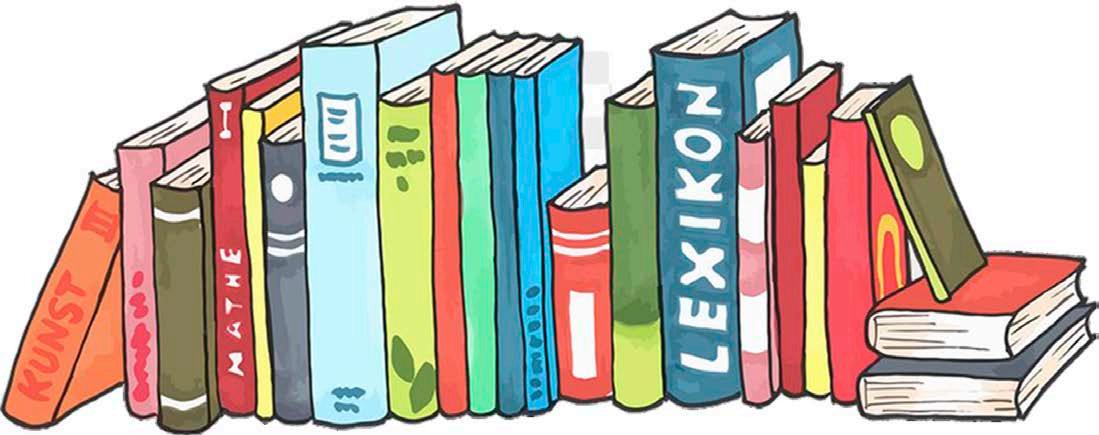
Amidst teacher shortages and post-COVID readjustments, public schooling is failing to meet children’s needs. According to a survey by the NSW Teachers Federation, 73% of teachers report that their workload is unmanageable, 90% don’t think their pay reflects their responsibilities and 89% report that shortages are significant. When children are struggling, whether it be due to a learning disability, missed lessons, or a teaching style that is incompatible with their learning style, tutors are often seen as the solution.
Tutoring is a billion-dollar industry, according to the Australian Financial Review , and one in seven students are being tutored — with numbers rising to one in two in metropolitan, high-performance schools. Classroom teachers don’t have the resources to cater to every single child in their class, and parents resort to one-to-one tutoring.
High school graduates are the most ubiquitous class of tutors, and this points strongly to the innate nature of tutoring. Despite the genuine needs of some children attending tutoring — those who seek out extra support due to their own specific needs — most tutors are employed to help children perform well in specific tests. From NAPLAN, to selective school entry, to the HSC, tutors who have experience with these tests are trusted to help children perform highly in them. These tests are highly structured, and answering questions can be reduced to certain formulaic interpretations based on the way they are marked. This means that tutors are often effective for their purpose. Particularly for the selective school entry test, tutoring companies have banks of questions which allow students to acquaint themselves with their style. There is a difference between the tutoring that students seek for the HSC: this can be considered less artificial as it is about instructing someone in a subject more broadly, rather than coaching them to answer a set of questions.
However, tutors do not serve the same function as teachers, indicating how these tests incentivise competitive, results-based learning. Teachers are employed to prepare children more broadly for life beyond the school gates. Children and teenagers learn essential skills in communication, collaboration and civility at school. Teachers are responsible for the wellbeing of students more broadly, engaging in health and safety topics alongside the necessary lessons in literacy and numeracy. Tutors, on the other hand, are employed for a very specific purpose, and are ultimately untrained in providing a holistic education, or education to specialised groups.
I remember, right before I quit tutoring, I was employed privately by a family to help a girl who was starting Year 12. Due to health problems, she was in hospital for all of Year 11, missing the foundation of many of her HSC subjects. She was planning to undergo a pathway in which she would do half of her HSC subjects that year, and the other half in the following year. I focussed on maths and chemistry with her, two subjects she was delaying. She was expecting me to teach her the entirety of her preliminary Maths Extension
and Chemistry syllabus, in two one-hour slots each week. She was clever and capable but I was completely unequipped to teach an entire syllabus instead of answering questions here and there. She quickly became extremely agitated by the fact that I was teaching her a slightly different formula to the one she had learned the year before. It was here that I knew I was completely out of my depth, and we ended the tutoring session early to allow her to calm down.
Despite being previously employed by a tutoring company, they offered very little resources beyond a quickly constructed online module about how to use their systems to provide feedback for parents. I had never learned how to teach children, and I was never taught how to cater to students with neurodivergence or other needs. I was still trusted with the wellbeing of a child who had fallen through the cracks of the private school that she had attended, and I completely failed her. Still, her parents forked out $50 an hour in the misguided belief that I could meet her needs.
As a private school graduate, I was perfect fodder as a tutor. I underwent tutoring myself, one three-hour self-guided slot for Maths and a one-hour conversation class with a French tutor. I was familiar with the format: students bring questions, tutors answer them. Selective school students are also desired tutors — their familiarity with the testing system, and also knowledge of exam strategy, often acquired through having received tutoring themselves, affords them the right to coach others.

A cycle soon forms: parents of students hoping to do well at a private or selective school employ private or selective school graduates, and those students go on to tutor once they have graduated. This perpetuates a homogenous school culture, a race to the top where those who are unable to access tutoring, or are for any reason not suited to the system of test-taking that engulfs Australian high schools, are left behind.
This kind of brain-drain is bad for students. Students learn best when challenged — when they are mixed with students of different cultures, ability and beliefs. Ultimately, tutoring widens the gap between the kind of education that wealthy students attain, compared to that of disadvantaged students. However, tutoring doesn’t necessarily advantage the wealthiest students, and the drive to tutoring is also dictated by cultural norms. Immigrant communities seek better for their children by engaging tutoring companies to guarantee their success. Parents may have completely uprooted themselves to gain this advantage for their children, and see it as their duty to create the best conditions for success. Often, they are simply conforming to the expectations created by the school culture around them. Particularly when they have taken such lengths to seek a better life for their children, and especially where there is a language barrier, it is seen as essential that they hire external help. Tutoring companies take advantage of this, charging highly for mediocre service – never mind the fact that there is often a significant gap between what companies charge parents and what tutors are paid.
Despite this, tutors are in many ways fit-forpurpose. They often, in fact, improve grades, a symptom of a school system that values competition more than education itself. This inherently privileges students who are able to afford tutoring, and highlights broader flaws in the education system.
Tutors are hired to fill the gaps in a school system that emphasises test taking, one that is under-resourced and cannot cater to the needs of each individual student. Tutors, however, are not the solution. They are often under trained, and can perpetuate the same ideas that harm neurodivergent or otherwise disadvantaged children. We should instead be ensuring that those in the teaching profession are incentivised to help all children perform well. Challenges such as excessive administrative workloads, low pay and teacher shortages must be addressed, should we aim to truly support students.
Analysis 9
Katarina Butler puts down the pen.
A cycle soon forms: parents of students hoping to do well at a private or selective school employ private or selective school graduates, and those students go on to tutor once they have graduated.
I’m an asthmatic, GET ME OUT OF HERE!
Runny or blocked nose? Coughing? Irritation of the eyes and skin? Sneezing? Watery eyes? Wheezing? Even asthma attacks? Congratulations! You must work in the basement of the University of Sydney’s Wentworth Building.
Over the past few years, the Students’ Representative Council has reported several mould and leak issues to the University, the most recent of which being Honi’s home in the completely unventilated Langford Office. Numerous past and current workers in the SRC have suffered serious health ramifications from working in the Wentworth basement, even to the extent of chronic lung damage. Even though the University “plans” to demolish the Wentworth Building in late 2025, Honi questions why the Students’ Representative Council has not yet been moved.
throats, headaches, congestion and coughing. A serious concern, though, is how the asthmatic Honi Editors have been affected — our asthma has significantly worsened since we began our term as Editors. Following Sunday layups, we wheeze for almost the entirety of the week; further, over the winter break and far away from the office, our symptoms disappeared. The cause-and-effect relationship here is obvious.
the SRC is retesting the rooms. However, Honi questions the extent to which mould treatment is just a band-aid solution from the University, especially on a building intended for demolition.
Who is responsible for ameliorating the mould situation in the basement? Lia Perkins, President of the Students’ Representative Council, confirmed to Honi that pursuant to an agreement between the SRC and the University, it is the University’s responsibility to provide the SRC with a safe workplace. Following New South Wales’ Health and Safety Act 2011 and Work Health and Safety Regulation 2017 , the University and the SRC are likely to be considered “persons conducting a business or undertaking”, or PCBUs. In this role, both parties bear a nontransferable duty to “eliminate safety risks so far as is reasonably practicable”, and if this is not possible, “minimise risks so far as is reasonably practicable”.
In a statement provided by the University, they stated that they have engaged a “specialist provider to undertake regular inspections and treat any issues as they arise.” They further encouraged Honi to run our air conditioner — thanks. Notably, the University is charging us for booking a replacement layup room: it is outrageous for the University to demand payment for a safe workplace.
Honi spoke to Carmeli Argana, who edited the paper with CAKE in 2021. Argana was diagnosed with chronic respiratory issues during her term as an Editor, and experienced “ongoing, really disruptive coughing fits” that made it impossible for her to work in the Wentworth basement. Doctors informed Argana that the environment of the Honi office was to blame, and prescribed her asthma medication. Argana’s sleeping patterns were interrupted, and she would wake up coughing in the middle of most nights; she also told Honi that following her term, her respiratory system became more susceptible to allergens.
Argana was not the only affected CAKE Editor.
Argana was not the only affected CAKE Editor. Her colleague, Zara Zadro, labelled the mould a “contributing factor to the terrible headaches and fatigue” and the “nausea and stomach aches” that she experienced throughout the year, particularly after fifteen-hour layup days.
Argana and Zadro were forced to work outside, separated from the rest of their team, and Argana, as a young woman relegated to public space “so late at night”, condemns the safety risks that this caused.
The current Editors share CAKE’s sentiments. The majority of us suffer symptoms in the days following layup: sore
Honi is confident, and grateful, that the SRC is doing what is reasonably practicable to minimise safety risks. The SRC has organised mould testing and thorough cleaning of the Honi office, provided clear advice as to preventing dust issues that might worsen asthma symptoms, assisted the team with filing incident reports, applied for replacement room bookings so that we are not obliged to use the office, and they have been in regular communication with us to reach a safe, practical solution.
What is not reasonably in the SRC’s power, though, is to eliminate safety risks: this is the University’s responsibility. Perkins confirmed that the University has treated past instances of mould in Wentworth’s basement, citing the “resource space, legal service rooms, and to an extent the President’s office due to their proximity to the Wentworth cooler room.” She said that mould in those areas is no longer present, and that following more recent reports of mould in the Honi office,
The treatment that the SRC deserves, and the obvious solution that will completely eliminate safety risks for its workers, is relocation. “In February, the University approved the move to our office space through SSAF (Student Services and Amenities Fee) Infrastructure,” Perkins said. “I have met with them twice now, but have consistently been told that ‘there is no space on campus to move us to’.” The University’s statement, however, seems to indicate a backpedal on what Perkins labelled an “approval”: they stated that the SRC office relocation is merely on a “shortlist” of not-yetapproved SSAF Infrastructure Projects, as the “process of scoping and considering suitable relocation options” continues.
The University’s statement also appears to indicate that Wentworth’s demolition is still up in the air. They merely “expect to submit a business case for approval next year,” and are clear to phrase their claim hypothetically: “if the project progresses, work would take place over 2025-2027.” This not only fails to account for how workers can safely remain in the SRC between now and 2025, but renders unclear when demolition will actually take place.
If the basement of the Wentworth Building is no longer a safe workplace, and if the SRC’s future in Wentworth appears to be indefinite, the University must provide us with prompt relocation: to neglect to do so is to clearly abrogate the duty of care owed to us. The Editors of Honi Soit would really like to breathe easy, and only the University can fix that.
If you currently work or have worked in the Wentworth basement, and have been negatively affected by mould issues, please contact the SRC.





Campus 10
Over the past few years, the Students’ Representative Council has reported several mould and leak issues to the University.
The majority of us suffer symptoms in the days following layup: sore throats, headaches, congestion and coughing.
It is the University’s responsibility to provide the SRC with a safe workplace.
The Editors of Honi Soit would really like to breathe easy.
Eamonn Murphy wants the University to provide a safe workplace.
Searching for the a u S tralian c ryptids
Cryptids have been at the core of fringe media for decades. Whether it’s farcical claims pigeonholed in unorthodox news outlets, or an online message board foaming at the mouth over a 144p photo of “Bigfoot”, hoaxes have an unmatched niche in the human brain and in human storytelling.
Whilst Mothman, Bigfoot, and the Loch Ness Monster have more or less become household names, the cryptids of Australia are often left completely without note. Whilst they may not be as legendary, if you scrounge the forums, the disrepute books and ravings, Australia has fared a share of hoaxes, doctored images, and fabricated tales, that are just as fascinating and just as absurd as anything else on the cryptozoology catalogue.
the Yowie
The only place to start is the Yowie, Australia’s most iconic cryptid. The mythos of the being has a long and convoluted history in Australia, drawing from thousands of years of Aboriginal storytelling across the North Coast of Queensland through to Southern New South Wales. However, despite these beginnings, the Yowie discussed in the fringe news is far removed from its Indigenous source, the creature and its mythos being a textbook victim of mass commodification.
Whilst the image of the creature varies between Aboriginal communities, the original renditions of the Yowie describe the being as a four to ten feet tall ape-like man covered in hair, with a flat nose, and long talons adorning its fingers. It’s often described traversing the planes and rainforests of the country with the creature maintaining a small presence in Indigenous dreaming to this day.
Despite these beginnings, following the centuries of colonisation after James Cook, and the subsequent mass erosion of Indigenous culture, the persona and depiction of the Yowie has been significantly warped by modern media and rural tourism. Current depictions of the cryptid that circulate online have been severely commodified, with depictions of the creature becoming directly analogous to the Western Sasquatch, losing most, if not all, of the Aboriginal aspects of its identity.
This commodification has seen the creature become a marketing tool for small-town tourism, with regions like Kilcoy Queensland and Woodenbong NSW using the Yowie’s likeness for billboards, statues, and marketing bottom lines. The most blatant example of this commodification is Cadburys line of “Yowie chocolates” through the 1990s, and the medley of nostalgia they still inspire.
Ultimately, sightings of this cryptid are far flung and prolific in fringe media with the personality of local news (rightfully) giving the being as little credence as the American Sasquatch. Bigfoot hunting has been a craze in the fringes of the world, and despite its origins, the Yowie will exist alongside the Yeti, Forestmen, and Sasquatch for the years to come.
h ook island sea monster
Whilst many of the hoaxes that have gripped Australia come from these commandeered stories, even more of them have been drawn from doctored images and tall tales spun for nothing more than shock value — the Hook Island Sea Monster being no exception.
Hook Island is an islet just off the coast of Queensland, famous for its diving reefs and the wealth of tourism it attracts. However, in December of 1964, one Robert Le Serrec claimed that he encountered a gigantic tadpole-like sea serpent in the island’s waters. Le Serrec and his family immediately undertook a number of interviews talking about how the creature charged their boat before slinking into the blue lagoon below, describing the creature as 80 feet long, boasting two eyes located on the top of its head, and brown stripes traversing the sides of its slick body.
Le Serrec’s photos have been circulating these boards and local news outlets for decades now, and like the rest of the cryptids on this list, it has been rightfully chalked up to another trick of the lighting and mystery of the ocean. A horrifying contribution to the cryptids of Australia.
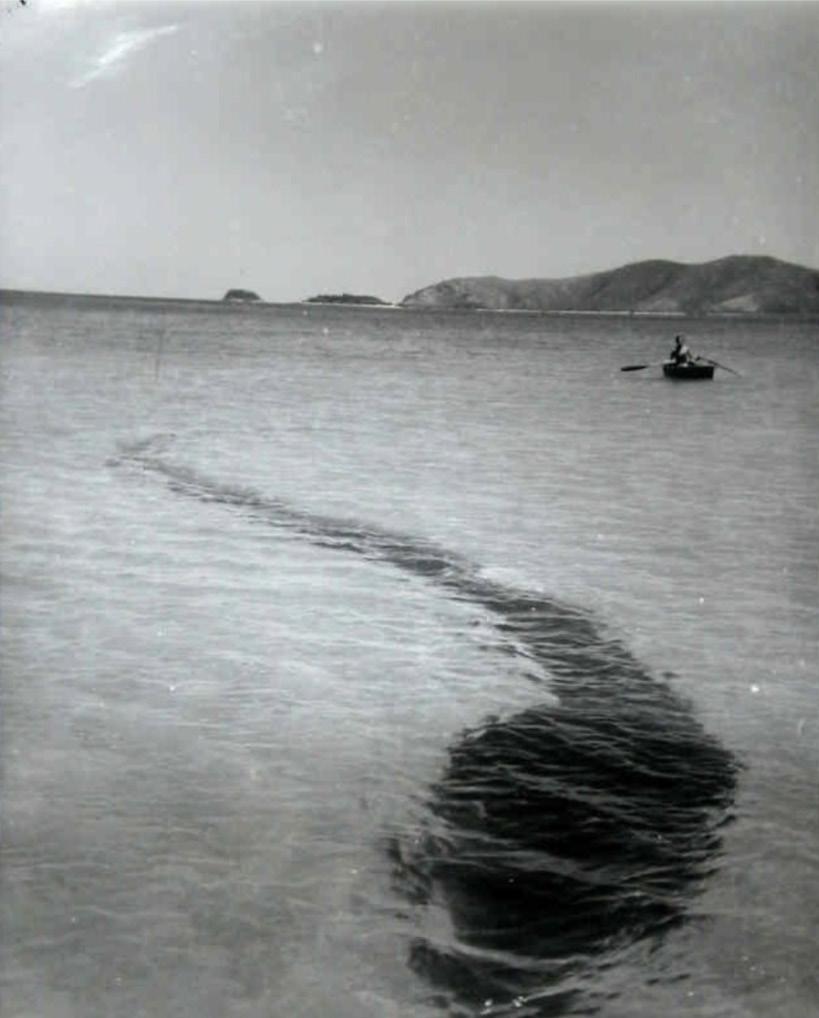
the bunyip
Moving away from the traditional doctored hoaxes, we find another warped Aboriginal story that has been commodified and altered by modern media. According to the original Aboriginal descriptions, the Bunyip is a mythical being said to lurk in the swamps and billabongs of the country, designed as a forewarning against the dangers of the water.
According to the Moorundi people of the Murray River, the Bunyip is a water spirit that is said to take the form of a giant starfish in the deep, protecting the river from trespassers.
However, over the last few decades news outlets and conspiracy theorists have warped and changed the persona of the formless Bunyip away from the original water spirit, into something considerably more monstrous.
The creature also appears in Ngarrindjeri Dreaming under the name Mulyawonk, a being that would ensure anyone who took more than their fair share of fish from the river would be swept away with it.
Much like the Yowie, renditions of the Bunyip have been found and recorded in a variety of Indigenous communities across Australia, with author Robert Holden claiming to have recorded at least nine regional variants of the Bunyip between different First Nations communities.
Modern “sightings” of the being often describe the creature as either a mammalian seal-dog being, or a long necked reptilian monster lurking in the swamps, hunting indiscriminately. This is an image far removed from the creatures’ beginnings, and unfortunately this is the persona that dominates to this day.
These creatures are by every stretch the most prolific hoax myths Australia has mustered in the last few decades. Despite their infame and presence in the mind of cryptozoologists everywhere, they aren’t the only hoaxes that have wracked this country.
The Booie cave monster of 1954. Thylacine sightings that have persisted ever since their extinction. The Hawkesbury River Monster. The Burrunjor. The Gippsland Phantom Cats. Cryptids and hoaxes are a thousand-fold if you know where to look for them and the absurdity they promise are always second to none.
Whilst this creature from the deep didn’t impact mainstream media to the extent of the other cryptids on this list, the fringe boards I frequent have been enchanted with the beast for as long as I’ve been on them. People claiming that the creature was just a mutant swamp eel, a plastic bag, or a deflated skyhook balloon mongered with seaweed circulate to this day, with the thalassophobia the creature induces showing no sign of letting up.
So, the next time you’re in the bush, swimming in a river, or cruising through an Australian lagoon, know that you might just be the next person to witness a myth that (almost) nobody will believe.
Monsters! 11
Nathan Phillis flirts with Mothman.
People claiming that the creature was just a mutant swamp eel, a plastic bag, or a deflated skyhook balloon mongered with seaweed circulate to this day
Cryptids and hoaxes are a thousand-fold if you know where to look for them.
MAGICALLY CAMP CONSERVATIVES AND THE FALLACY OF THE HETERO NORM.
William Winter shows that there’s nothing progressive about magic.
There are three steps to a good magic trick: the pledge, the turn, and the prestige.

There are three steps to a good magic trick: the pledge, the turn, and the prestige. The pledge is an establishment, an introduction to something presumably mundane which you promise to change. Then comes the turn, the moment the rug is pulled from the audience. The magician pledges a dove, then turns the bird and makes it disappear.

Finally, the prestige. The magician
changed is now unchanged in seemingly impossible ways. What delights the audience is the return to normal, the idea that even though something has changed in seemingly cosmic and un-understandable ways, there is security and comfort to its



There’s nothing progressive about magic. When a magician performs the pledge, the turn, and the prestige, the joy of seeing a 40-yearold man with his snazzy tux perform to kids is the comfort of returning from the turning. It is safety in

But who says the pledge needs to be the pledge? I mean, when a magician pulls out a dove it’s “wondrous” and “exciting” but when I pull out a dove I “need to leave the playground, you’re scaring the kids”? Sounds

Who says a norm is a norm? And why do we accept that?
I’m going to level with you. Attempting to unravel this idea has been knotty, and at every turn I’m confronted with how intricately set-up the premise is. The things I’m trying to see are designed to be unseen, mechanisms constructed on each other which need to be simultaneously halted to see the true inner workings of the
exist as a turn, whilst conservatives are a pledge disguised as prestige: they look to go forward, but take steps backwards. See, in the triple-step of magic, the turn is framed as an unreality. It is something which shakes the foundation of what we know to be true, and then the prestige is a comfortable hug which secures us in our trust of the world.
What does this have to do with conservatism? Let’s ground this. When we made gay marriage legal, we did the turn. Marriage as a
All of this works to put on a show. Politics is presenting an idea to an audience and appealing to sensibilities. Often, we don’t consciously understand our own sensibilities, they’re just something inherent to our view of the world. Often, this worldview is heteronormative, invisible.
To take a complex idea from Judith Butler (the dreaded God of the canon of Gender Studies) and extract the most relevant part could be seen as disingenuous, but I will do it anyway. Gender is citational.
Gender is citational.
Gender is citational, in that it is the many small notes that we make in our heads as to what it means to be a man/woman, masc/femme. We see someone act in a masculine/feminine way, and we un/consciously note that this is what a masculine/feminine person should be. And we do it all the time, we build our own reference book and we view the world using it as a manual. It’s like a tour guide, constantly commenting in your head: “that’s a man”, “that was something a woman would do”, “that sounds like a man’s voice”. Attempting to override this is difficult, because it’s the first and most constant train of thought which flits through our heads.

prestige of the “true” independent man); the hard-line enactment of borders to conserve national identity (reacting to the progressive “turn” of accepting refugees in desperate need of help and security due to the “pledge” of preserving national safety); and the overturning of Roe v. Wade in the US (the ultimate prestige — removing abortion rights for millions of Americans because they got a smidgen too progressive in the turn).
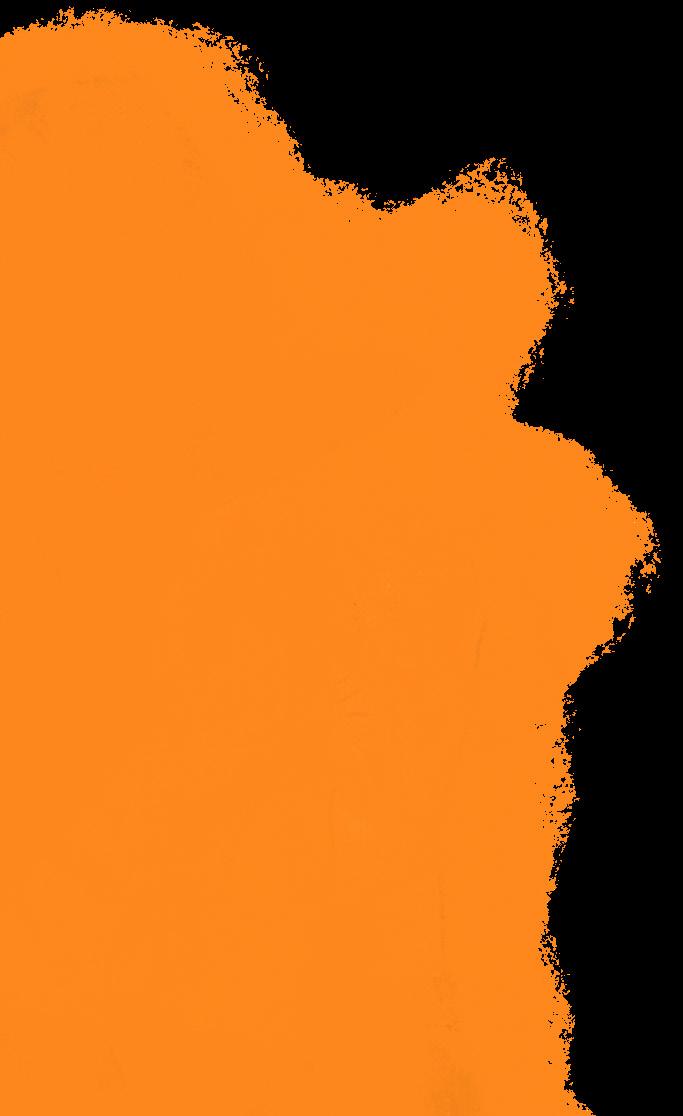
The Pledge; The Turn; The Prestige.
We see the pledge, and we ground it in what we understand the world to be. This is the reference point for why the turn is a turn, why it is the thing which doesn’t fit our norm.

The Pledge; The Citation; The Turn; The Prestige.

Progressives
Politics is presenting an idea to an audience and appealing to sensibilities.
Let’s turn: Trans people competing in sports is not ‘objectively’ taking spaces from cisgender competitors, but rather, when trans people compete in sports they contribute to the idea of human excellence in physical prowess in the same way that cisgender people do. When they have differing physical attributes, it’s equivalent to swimmers with bigger feet or taller basketball players having physical advantages but still needing to train and be technically impressive to compete. Then, the prestige: now that a trans person has won a sporting event, we must ban them all, because it is unfair to the cisgender person who would’ve won if it weren’t for these mischievous and conniving trans people.
And through it all, the prestige is pierced by a simple, undefinable concept: camp.
Camp is both a monolith and a sprawling concept. Difficult to pin down but capable of looking you right in the eye, camp is an ironic appeal to bad taste, a recognition of how something which is aesthetically bad can be useful, funny, and ironically good.
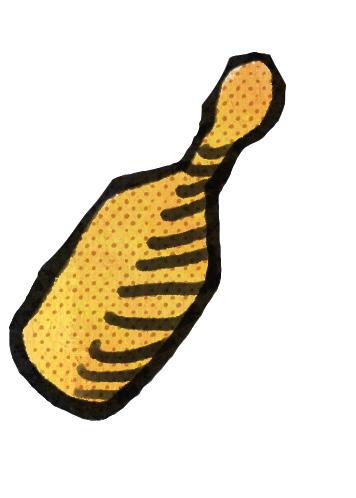
Ben Shapiro, a human man, setting Barbie dolls on fire to protest the “anti-man” and “woke” movie which he claims to be “anti-men” for suggesting patriarchy hurts everyone? Camp.
Posie Parker, a prominent UK-based TERF who was chased out of Australia for spreading anti-trans discourse, insisting that cis-women be called “adult human females” because she refuses to use scientifically and
When these harmful and persistent ideologies are distilled into obvious and concrete reference points, it inflames people with a conservative bend to support their own view of the world, but it also actively brings to light the societal pressures and norms which lead us to
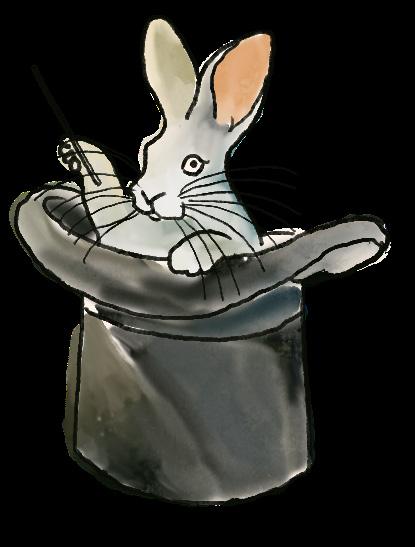

Watching prominent conservative figures fight so hard to maintain rigid gender norms is camp. Seeing Pauline Hanson walk into Parliament, seriously wearing a Burka with complete confidence even though it was absolutely racist garbage? Camp.
ideals are the foundation of our society. It is much more difficult to explain to someone who has not seriously examined their own experiences with gender and race and class how heteronormativity enacts itself in our language, culture, and ideas of what is normal when we lack such explicit attempts to preserve it.

Heteronormativity
Heteronormativity is pervasive because it is invisible. Attempting to conserve it makes it visible, thus making it more difficult to conserve.
The Pledge; The
we should question why we are surprised by the dove, or further, why we aren’t surprised by the dove.





Conservatism is a lens which, when viewed from the right angle, can make heteronormativity clear. The system itself keeps us in check in silence. It is not a hypnotic vision projected into our brains through radio waves, it is the macro and the micro, the laws and discourses around what it means to be a certain gender and all the ways that it intersects with race, class, personhood. It is the way we instinctively make assumptions about other people, colours, careers, and clothes, and we turn that inwards. Gender is self-examination, and therefore self-policing. If you are never forced to question your gender you do not question the systems which make you gendered.
Gender
There are some who argue that the human brain is not meant to comprehend as much information as we are exposed to in the digital age. But heteronormativity thrives on the subconscious.
Politics is a performance, in the sense that it is many parts and the whole. The magic of performance is the multiplicities with which it can be performed, it is the harmony of sound and visuals and acting and singing and performing, intentionally projecting an image or emotion to get a point across. But when performance is broken
subtle ways in which we, as humans, perceive and process the world around us. Breaking down the magic trick gives us the tools to interrogate each step, and question why we start at the pledge, and why we end at the prestige.




Maybe with this same logic, we can start to reshape our perceptions of gender/race/class as a society, and as a system. Things which persist in the dark can’t survive in the light.

Difficult to pin down but capable of looking you right in the eye, camp is an ironic appeal to bad taste, a recognition of how something which is aestheticaLLy bad can be useful, funny, and ironicaLLy good.
is pervasive because it is invisible.
is self-examination, and therefore self-policing.
Breaking down the magic trick gives us the tools to interrogate each step, and question why we start at the pledge, and why we end at the prestige.
Art by Long Huynh and Bipasha Chakraborty
The old ball and chain: why do Boomers
“I haven’t heard from my wife for weeks – I don’t want to interrupt her!”
“I get this nagging feeling sometimes… it usually starts when I wake up, and disappears when she goes to bed.”
“Behind every nagging woman is a husband not doing what he’s supposed to!”
You may have seen one-liners like these before, peppering the Facebook walls of your older relatives. I’ve watched coworkers make these jokes, accompanied by rolled eyes and elbow-nudges, to a chorus of knowing chuckles, framed photos of them grinning with their wives sitting atop their desks. We don’t bat an eye when men say they hate their wives, and in fact, we sometimes expect them to do so. How are these roles — the nagging wife and hen-pecked husband — so ingrained in our culture? And why do we find them funny?
The “nagging wife” trope has a long history. The “shrew” that gets “tamed’” in Shakespeare’s play is a strong-willed wife; the verb “scold”, meaning “to tell off”, stems from a Middle English noun meaning “a chiding woman”. The trope crystallised in the West in the 1960s, a time when white-collar jobs rose in popularity, instilling a culture of men working nine-to-five and returning to a home-cooked meal, lovingly prepared by their stay-at-home wife. Women were, as they have been for much of history, relied upon to do ceaseless unpaid and unrecognised labour. Women could not get credit cards which were not in their husbands’ names, and divorce was still widely inaccessible and stigmatised. Marriage was at once a force of oppression and a lifeline; being an unmarried older woman was also looked down upon. At the same time, second-wave feminism
emerged as a school of thought, a radical movement incensed by the patriarchy and all its arms. An awful lot of women were angry, and many of them took to the streets in protest: their anger was made visible.
This rise in visibly frustrated wives coincided with a boom in publicly accessible entertainment. During the 1950s, televisions had gone from a rare luxury to a commodity which the majority of American homes had access to. Sitcoms, which often aimed to depict “everyday” people through recognisable caricatures, gained popularity in the mid- to late-1950s. Standup comedy evolved from underground monologue performances to bigger, televised shows. The nagging wife trope existed in comedy before these technological advancements: Henny Youngman, a comedian known for his one-liners in the 1940s, was best known for the line, “take my wife… please!” With these technological advancements, though, comics were tasked with entertaining larger audiences than ever before. What better way to do so than by appealing to the assumed universal of a wife who can’t stop complaining?

Clearly, this trope did resonate — and continues to resonate — with many people. Comedians like Jerry Seinfeld and Dave Chappelle still employ punchlines about their (real) wives being nitpicky, stubborn, or frustrating. If this was not an entertaining trope, it surely would not have endured over half a century in our media. So, why has it stuck around? Is it actually funny?
On the one hand, comedy can be an outlet for frustrations that are hard to express or navigate. Many people are trapped in unhappy marriages which are hard to leave for legal and
hate their

financial reasons, alongside familial responsibilities. This could be for an infinite number of reasons, but a culture which treats a heterosexual marriage as something everyone must achieve — preferably when they’re younger — and divorce as taboo and a sign of failure certainly does not help. These pressures exist today, but were arguably even stronger decades ago when the trope first gathered traction, for all the reasons I outlined above. Combined with gender roles which insist upon men working long, tiresome days to single-handedly support a nuclear family with their income and upon women bearing the brunt of housework and childcare, it is easy to understand why this trope is so resonant, especially with older generations who got married in a less progressive context. A man may well feel nagged when asked to tidy up after himself if he sees that as his wife’s job or is overtired. A woman who has to constantly remind her husband to do the bare minimum to keep their house clean could easily perceive him as a deadbeat. This trope is capitalism viewed through a funhouse mirror: it pokes fun at the very real tensions that emerge when you make society dependent on marriage. In a way, I can’t blame people for laughing along to it, nor for making jokes about it. It’s a coping mechanism.
wives?
At the same time, though, this is obviously a harmful trope. It dismisses the very real grievances of women as “nagging” — it is no coincidence that, when second wave feminism encouraged housewives to speak up about their oppression, men on television laughed at them for doing so. It perpetuates gender essentialism, or the notion that men and women are inherently different, by claiming that women are insatiably picky and men are doofuses who can’t take hints. This also shields men from blame for acting in harmful ways – it’s the same rationale as notions like “boys will be boys”. How could they be expected to know what women want from them if all women do is complain? Additionally, the expectations that marriage is a drag or that you hate your spouse are incredibly toxic. If people enter marriages with the expectation that they will become unpleasant, it makes them less likely to seek marriage counselling or divorce when they do go downhill. Of course, marriage and relationships can be tricky — humans are messy and hard to get along with perfectly, 24/7 — but, to be clear, marriage should not be a source of misery.
Like so many other tropes in comedy, the “old ball and chain” trope reveals something about those who laugh along with it. It speaks to the frustration of a generation who truly can’t live with, nor without, their spouses. As attitudes towards marriage, gender roles, and singledom shift, I can imagine this trope will lose its audience and fade into obscurity as it becomes less obvious why someone would live with a spouse they despise. You should Tropes like this obscure that.
Headphones: Accessory or Necessity?
Sentenced to tackling your mountain of canvas modules? Stuck on the T4 line after another train delay? Walking down to the shops to pick up your regular sweet treat? No matter what time, activity or chore, headphones have become a necessity for embarking on our tasks of the day.
The advent of headphones has given humanity the ability to ingest information while completing other activities. For all of us, it’s how we consume their regular podcasts, curate Spotify playlists, communicate with friends or relive lecture recordings. They
provide that constant stimulation, when the pain sitting with our own thoughts is becoming more and more undesirable. For some, audio consumption has become a crux for productivity and sanity.
The first recorded iteration of a headphone dates back to 1891 when a French engineer, Ernest Mercadier, patented the “bi-telephone”. The original model was lightweight and intended for telephone usage only, but served as the building block for future audio technology.
Twenty years later, Nathaniel Baldwin came forth with the over-ear headphones in 1910, which enhanced the different output user-experience technologies to include two padded ear cups — what we know as headphones today.

Then, fast forward 40 years to 1958, competitive advances in the
technology market triggered the birth of “the brands”. Jon Koss designed the first stereo headphones with the iconic Koss SP-3, which led to the Walkman in 1979, and then eventually the iPod and mp3 players of 2001.
But it wasn’t until 1970 that the headphone device, as a way to enjoy music, became a trending accessory in our everyday lives. Connected to the Walkman, a portable listening experience was now upon us. From here, headphones ranged in style, colour and design, with users even taking the liberty to decorate or personalise their own set.
However, despite sharing the same technology, we each have uniquely personal relationships with our headphones.

Now, headphones are synonymous with personal identity, outfit styling and the new wave of user experiences.
They serve as a functional and stylistic elevation to any outfit, and Pinterest boards are infiltrated with street wear statements and nonchalant headphone appearances.
In 2019, ASOS released fake headphones to appeal to the growing trend of styling headphones as a
Culture 14
This trope is capitalism viewed through a funhouse mirror: it pokes fun at the very real tensions that emerge when you make society dependent on marriage.
Nicola Brayan wonders what makes us laugh at what we do.
Zeina Khochaiche plugs in.
Would you still love me if I was a worm?

There are a few texts from your significant other that are truly devastating to receive. The break up text, the I-don’t-love-you-anymore, or — perhaps more hurtfully —- no text at all. But, the text that was the genesis of this piece is far less consequential. From an ex boyfriend of mine: FYI, I wouldn’t love you if you were a worm.
The interaction had played out exactly as I was expecting. In fact, I’d been fascinated by the worm debacle that had been unfolding on social media for weeks, watching countless posts made by (usually) women, bemoaning the fact that their partners wouldn’t promise to love them if they were to wake up the next day as a worm. On the surface, the trend is ironic: the women are after all aware that nobody is in danger of actually anthropomorphising into a pink, limbless creature at short notice. They roll their eyes at the camera under hyperbolic captions like “when my boyfriend won’t promise to love me if I became a worm and I cried until I threw up”. Some videos even include their partners, who make a show of their exasperation. At the same time, there’s a confessional quality to these posts that is concealed by the presumption of sarcasm and good fun. People really were getting upset about the fact that
becoming a worm was a deal breaker for their partners. Why?

Our worm might in fact be a microcosm of the push and pull we feel within all 21st century relationships: the balancing act we perform between our ideals of independence and free choice and a powerful, essentially human urge to seek unconditional love. The worm is a perfect stand in for this urge. After all, what creature could be more innocent, more helpless, and less endowed with loveable qualities like beauty or intelligence? To love someone as a worm is to love someone completely without condition or expectation. It is a kind of love that is both abstractly noble and completely impractical for adults to perform.
Once we become adults, almost all our relationships are markedly, and, some would argue, necessarily, conditional. There’s a particular whiplash about that shift, which happens somewhere in our teenage years or early adulthood. Hopefully, many of us grew up with loving and supportive parents, dedicated teachers, best friends, or even first loves you daydreamed about marrying. But the price of our independence, and the endless choices we have about how we want to live our lives, is that these choices will inevitably piss somebody off. Some families reveal that love is now conditional on law or medical school, maintaining friendships now requires
Lucy Bailey wiggles towards answers.
active planning and effort, and the attention of those partners begins to depend on being more exciting than a gap year spent snorting cocaine in Europe. Inevitably, we disappoint.
In some ways, the conditions we place on love are there to protect us. Why else is there so much talk about setting and maintaining boundaries with the people in our lives? At the same time, it is far harder to apply this set of principles to ourselves. Whilst we can aspire towards total self confidence and righteous behaviour, we remain conscious of the myriad ways in which we all fall short of this ideal. Under this model, love is secondary to virtue. And, aware of the gap that lies between us and a truly virtuous existence, we worry that our flaws render us unworthy of love. This nagging feeling eats away at us, making us into the kind of needy people who pose strange hypothetical questions — daring our partners to reveal that, yes, their love for us has its limits.
These (usually)women of the internet aren’t really asking about worms. Our worm is simply a convenient stand in for all the other things that can and will go wrong throughout the course of our lives. A job loss, depression, thirty extra kilos, cancer, losing a parent or sibling, the list goes on. We grow and change and are shaped by our environments, not always in a way that represents any kind of positive progress or evolution. Not alienate the men in the room (god forbid!), but the (usually) women have reasons for asking those kinds of questions. When

their wives are diagnosed with cancer, men leave their partners en masse. A diagnosis of a terminal illness will double a woman’s chance of being served with divorce papers, with one in five women being left in the year after diagnosis. Conversely, a man’s terminal diagnosis brings his chance of being served divorce papers down to one in fifty. The fear of romantic relationships being contingent upon aesthetic and relational labour is very real.
We want to know that we are loved unconditionally, but, as long as we are capable of growth and change, of making moral choices, we know this is impossible. Paradoxically, we yearn for someone who will make an exception for us — who will extend us love, care, and unconditional positive regard. Even, say, if we were to become a worm.
Art by Claudia York
fashion statement. The item was notoriously titled, “ASOS Design faux headphone earpiece in silver tone”. This ridiculous moment in fast-fashion history not only garnered critical public reactions, but reflected the growing fusion of fashion, image and branding in contemporary headphone experiences.
At times, we may find ourselves profiling others by their styling and use of headphones. For the cult classic Airpods, we might acknowledge them to be basic but functional — used by an average earphone wearer. If we see the over-ear padded Beats by Dr Dre headphones, we may reminisce on the 2014 cultural phenomenon that was deeply linked to street style status. Or, maybe we spot an enigmatic train passenger with vintage AudioTechnicas — acknowledging their esoteric style. Should we notice the newly introduced AirPod Maxes, observations of full wallets and clean

aesthetics come to mind.
Regardless of what design or brand, headphones serve as an escape from our reality. and a way to enable our digital explorations. They have always been a standard pairing with any phone we purchase, but they are now not only an extension of the device, but an extension of us. However, capitalistic attempts at market dominance aside, our growing dependence on headphones raises new ideas about its place in the student experience.
At the University of Sydney, it is unlikely you will see a student without a pair of earbuds or headphones. Should you traverse any of the libraries or grounds, chances are that students have their heads down and the headphones plugged in. Headphones are tantamount to the contemporary student lifestyle.

Arguably, the era of COVID lockdowns, Zoom tutorials and
Microsoft Teams work meetings escalated the importance of this tech accessory. We rely on headphones for the convenience of consuming our audio on the go. They comfort our commutes to campus, they aid us in our study sessions, and they allow us to deter any unwanted social interaction. We can watch TikTok on the go, scroll through Instagrams on the bus, Facetime our friends and catch up on our youtube subscriptions on the commute home.
Perhaps our emerging dependence represents our fear of silence, or our inability to consume only one input of media at a time. Is our newfound dependence on headphones a product of tech evolution, or a concerning change in behavioural patterns. Or both?
Maybe this analysis into the headphone’s personal use and function is too nuanced, and should consist of no more than us
listening to good music whilst staring dramatically out of the train window.
But excuse me, now I must go. I’ve got to go listen to the entire Barbie soundtrack.
Art by Lauren MacColl
Perspective
15
The CBD is a rather mundane space — eerily similar buildings, awkwardly timed pedestrian crossings and cafes with fleeting conversations. Nestled on Castlereagh Street is a glassy facade labelled with block letters: “SCIENTOLOGY”. I trekked there to find if anything hid beneath the artifice, if there was any truth to the wild stories of aliens and cultlike practices.
As I walked in, the receptionist smiled and asked me to sign my name in their book. Looking around, there was an antiseptic sheen over everything in the facility. There were TV screens and sci-fi style control pads and E-meters, a device used in the process of auditing — a faux-therapeutic process. Along the exhibits, are large, gold lettered placards marking sections such as “TEST EVALUATION”, on a plate of light blue and silver. The white
tiles were pristine, and the glass panels were embossed with their cross logo.
A guide greeted me and handed me an information pamphlet, providing steps for a self-guided tour. I was instructed to sit in a pod and watch an introductory video on Dianetics, one of the core tenets of Scientology. Presented in the style of a daggy 90’s infomercial, the video explained that humans have an “analytical mind,” which is responsible for rational behaviour, and a “reactive mind” that stores bad experiences, and is the reason for our negative emotions.
Their message was simple — what if you could take control of your “reactive mind,” be happy, and live the life you’ve always wanted? This point was established in the first two minutes of the video. Yet it dragged on and on and on, up to around fifteen minutes, as it repeated the
same point over and over again.
When an argument is repeated that many times, it wears you down. By the end, I found myself not only nodding off, but nodding along. I was no longer bothered to mentally refute each of the increasingly tenuous claims that were being made. And while I was far from converted, there was a part of me that wanted to believe what they were saying. That I could stop being sad. That I could control my emotions and live the life I’ve always wanted. But I knew I was being ridiculous, and my tour had to go on.
For a belief that doesn’t overtly mention a God or idolatry, the premises still have a delegated space for the late founder Ron Hubbard’s office. The area is enclosed and out of bounds for outsiders — a pristinely
organised desk, desk tucked in as if Hubbard oversees the operations every day from his CBD office and books stacked up insinuating that his fingers frolic through the pages from time to time.
The entire space is a shrine for the deity that is Hubbard — he remains present in their day-today operations and while his life is commended for prolific scientific thinking, his ideology is the absolute truth with a blind reverence that cannot be moved.
Hubbard — or “Mr. Ron,” as my guide called him, maintains an omnipresence throughout the facility. Quotes from him are featured on every wall, steel-plated and with bold lettering. Large infographics track the major stages of his life, and are dedicated to each of his occupations: writer, founder, humanitarian. For a religion that often calls itself a science, Hubbard

16
“I know no man who has any monopoly upon the wisdom of this universe. It belongs to those who can use it to help themselves and others.”
- L. Ron Hubbard
Scientology
Art by Katie Hunter
is endowed with messianic qualities. As a toddler, he was able to tame a wild horse. As a teen, he travelled half the world and studied eastern and western philosophy. As an adult, he preached his message in the face of persecution. He died, but he remains present, his teachings on the walls, his office perfectly preserved.
They administered a questionnaire, the “Oxford Capacity Analysis” (OCA) — which is not related to Oxford, the University — that had 200 questions, not unlike a MyersBriggs questionnaire. The survey had questions such as “Do you sometimes feel that your age is against you (too young or too old)?” and you could answer with a yes, no, or maybe. The test was repetitive, with multiple iterations of the same question at different points of the quiz. It has been discredited by psychologists, with some ruling it as “manipulative”. On the desk of files, there were versions of the test translated in Chinese. I noted that most of the books and pamphlets available, often for free, were translated in Chinese.

After the quiz, there is a free consultation with an experienced Scientologist, typically an auditor. I was given a results sheet which represented my mental health on a clean, jagged line. On the left is a score ranging from +100 down to -100, with the top x-axis indicating desirable states such as “stable”, “happy”, and the bottom x-axis indicating “unstable”, “depressed”, measured by the size of the negative number it corresponds to.
The auditor’s assessment of me was eerily relatable — when the OCA asks 200 largely
generic questions about one’s life, it’s hard to imagine that it provides anything less than a semi-accurate picture of a person. The auditor was kind, and seemed to care about me, and did not break eye contact for most of the consultation. They told me that the test results were not lining up with who I was, that there was a “real” me underneath my current state.
I divulged stories of my drug usage, and the auditor immediately latched onto it as the reason for my struggles. I was told that my mental health medication was also not helping my condition. Upon expressing my concerns with the Church’s plethora of scandals, the auditor pointed to the anti-psychiatry stance as a reason for the media’s vilification. They said that the Church of Scientology is the first point of contact for institutions in times of crisis, saying volunteers helped out during the bushfires, and that there are still Volunteer Ministers who are helping out with the floods in Wagga Wagga.
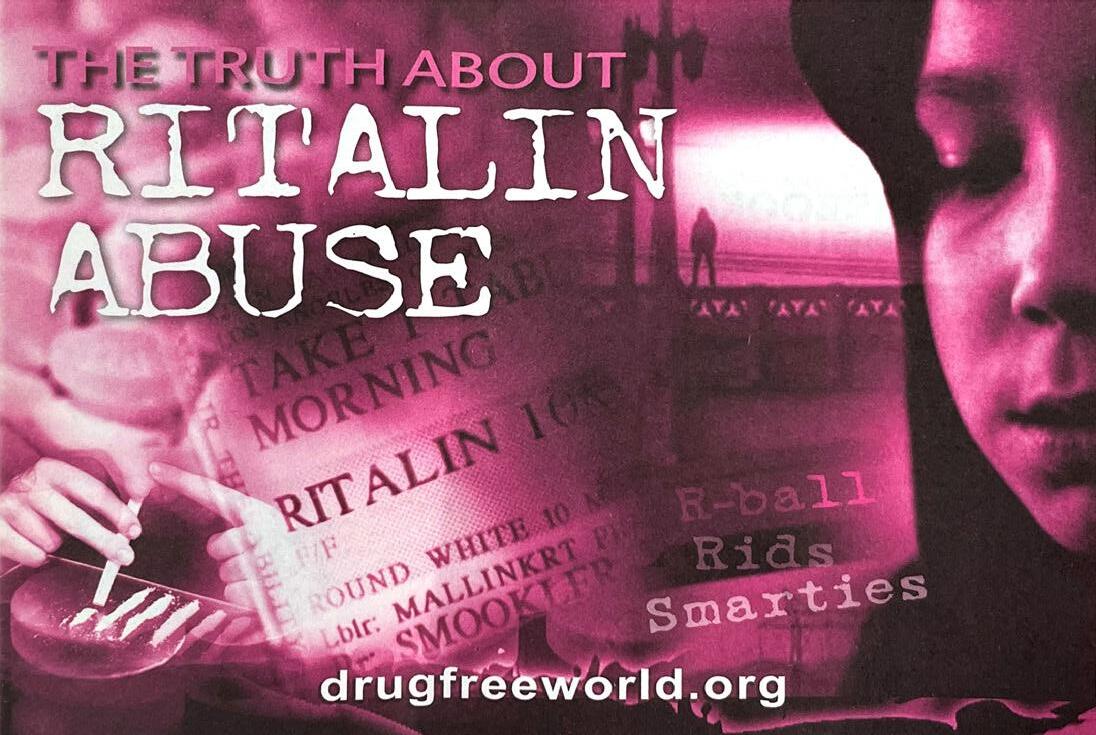
At one point, I asked frankly about Xenu; there had been no sign of him thus far. For the uninitiated, it is purported that once you reach a certain point in the Church, by paying hundreds and thousands of dollars, you are introduced to an elaborate sci-fi story involving a galactic overlord “Xenu”, and populations disposed of near volcanoes, their souls (Thetans) now infecting our bodies.
“There aren’t any aliens in the basement,” said the auditor. I pressed them again, wanting to clarify if that meant they didn’t believe in Xenu. In response, they gave me a terse “No.” In the introductory video on Dianetics, I’d seen at the start of the tour advertised a book, “Dianetics: The Modern
L. Ron Hubbard: Science fiction author and founder of Scientology.
Dianetics: A set of ideas which form the core beliefs of Scientology. Posits that certain negative/traumatic experiences called “engrams” are stored in the “reactive mind,” which then cause us to experience negative emotions. Dianetics dictates that said “engrams” can be eliminated through a type of counselling called “auditing,” which allows people to reach their full potential. Commonly accepted to be a pseudoscience.
Auditor: One who leads the auditing process.
Preclear: One who has not undergone the auditing process.
Science of Mental Health” depicting an erupting volcano.
After a while of hearing them speak, I said I’d speak to my friends before joining the courses they recommended. Their brow furrowed, telling me to be careful.
“That wouldn’t be a good idea,” they said.
Based on my test results, the auditor assessed that I was easily distracted and likely to change my mind, stressing that these programs would change my life for the better. I respectfully declined.
There are good and bad people in the world, they added. Good people were nice people, who supported everything you did. Bad people were mean people, who would say things you didn’t want to hear, claiming to be “honest”.
These people (who they said are roughly 20% of the population) aim to suck out all the joy from the world, and I should cut them out of my life. The Church is reported to have a practice called “disconnection,” in which followers are expected to cut all ties with those deemed “antagonistic” to Scientology. They assured me that the Church only had good people.
Before leaving, I asked the guide who greeted me how they had joined Scientology. They told me that they had previously worked in a company where their boss introduced them to it. The guide stressed it was important to keep an open mind, and assess things for yourself.

As I left, I thought about what they said, and a quote from L. Ron Hubbard shown in one of the introductory videos.
Clear: Someone who no longer has a reactive mind.
Scientology: A “religion” developed by L. Ron Hubbard after he lost the rights to use the term Dianetics. It builds upon the theories of Dianetics, and has also been described as a cult or a business.
Xenu: The ancient malicious alien ruler of the “Galactic Confederacy” who, 75 million years ago, sent billions of aliens to earth in spaceships that looked like DC-8 aeroplanes and dropped them around volcanoes and then killed them with hydrogen bombs. The Church normally only reveals this story to members once they have reached a senior level, yet it has been leaked by numerous sources. My guides claimed that they did not believe in Xenu.
Scientology 17
“If it’s not true for you, it’s not true.”
What happened to Guzman’s self-serve salsa stations?
Consumer protection laws were written to do one thing: to protect the rights of consumers. These are laws that give consumers the right to a refund, or protect them from fraud. Yet the most grave attack on consumers in recent years is one that isn’t protected by them. And this was the decision of Guzman Y Gomez to abolish its selfserve salsa stations.
In the late 2010s, when Guzman Y Gomezes began to flourish across the country, one of their most beloved qualities was their self-serve salsa stations, where we — the unwashed masses — were entrusted with the right to decide which salsas and condiments we would add to our meals, and the manner in which we added them.
Maybe you liked to drizzle their classic Guzman Smokey Chipotle salsa over your enchilada’s corn chips, or perhaps you preferred to pour a puddle of habanero salsa in the corner of your burrito bowl. For many — myself included — it was a special experience, one that provided a small sense of freedom in a world that’s becoming increasingly authoritarian.
In 2020, the Guzman Y Gomez selfserve salsa stations were abolished. This was ostensibly done in the name of protecting people from COVID-19 in the midst of a global pandemic. But what about protecting people from receiving inadequate servings of salsa? And if it was truly about the pandemic, why haven’t they reinstituted them in the months since restrictions have
been lifted? I decided to ask Guzman Y Gomez themselves.
“GYG removed our salsa stations during covid and since then we decided not to return them in their existing form of being available in an open format as there are still some health concerns around multiple hands touching the station,” a Guzman Y Gomez spokesperson told Honi in an exclusive interview over email.
“However, the salsa station items are still available for guests to order free of charge in restaurant. We also found during covid, our app gained a LOT of new guests and the vast majority of guests have salsa station items added to their meals in their order which is a better culinary outcome.”
If you think this is a legitimate reason to do away with self-serve salsa stations, then I’ll wrap you in a tortilla and call you a spicy ground beef burrito, because quite frankly — you’re full of it.
Let me begin by stating I am opposed to and offended by the insinuation that the patrons of Guzman Y Gomez — regular people like you and me — are somehow so squalid that our shared use of a self-serve salsa station poses “some health concerns”. I believe that everyone who goes to a Guzman Y Gomez restaurant maintains proper hand hygiene and a high standard of cleanliness. I think I speak on behalf of all of us when I say that.
The argument that ordering the salsa
online results in a “better culinary outcome” is about as flimsy as the eponymous bowl that features in the famed Guzman Y Gomez burrito bowl. The freedom to salsa one’s own meal is stripped from the individual and put in the hands of an unelected bureaucrat. So what happens when they don’t add my salsa just the way I like it? And even if they give me a little bowl with my chosen sauce in it, it’s not like I go back up and ask for more. I’d feel like a little piggy, going for seconds at my little trough.
So what of the quiet Australians, who aren’t assertive enough to send the meal back and ask for it to be resalsa-ed? What of the people who don’t want to bother said bureaucrat, because said bureaucrat is probably overworked and not paid enough to accommodate every customer’s salsa related whim? These are the questions that need to be answered.
It’s clear. Australia deserves to have its self-serve salsa stations back.
After all, it is not as though Guzman Y Gomez cannot afford to reestablish selfserve salsa stations. Make no mistake — Guzmanomics is working. The franchise
 Luke Mesterovic reports.
Luke Mesterovic reports.
is projected to reach an annual revenue of $1 billion by 2025, a feat which, in part, can be attributed to their Guzflation of prices. Everyday Aussies like myself will no doubt have noticed that the minimum in-store price of a regular burrito has skyrocketed from $9.90 to $13.70. One would think that we, as loyal consumers, deserve a piece of the success that we helped propel them to. A piece that is shaped as a selfserve salsa station.
Will we be allowed the freedom to decide how to decorate our tacos, our nachos, or our quesadillas? Or will selfserve salsa stations remain a relic of the pre-pandemic world? That’ll be up to Guzman and/or Gomez to decide.
 Art by Katarina Butler
Art by Katarina Butler
SUDS’ Play On: Friendship, Love, and Murder
Bipasha Chakraborty misses their netball team.
If you’re anything like me, walking into a girls changing room will give you war flashbacks, and that’s exactly what walking into Cellar Theatre to see Play On felt like.
With pink benches on both sides of the stage, posters for societies and events, graffiti, and menstrual products plastered on the walls, the audience is immediately transported to a more stylised change room. Amelia Vogelsang’s set design was an almost perfect replica: you could nearly hallucinate the mixed scent of sweat, deodorant, and perfume.
Play On follows the dynamics between a recreational netball team as they make their way through a local competition. Andie (Victoria Georges) — who is moving into the city for uni from a small rural town — joins in hopes of making friends, and slowly finds herself a new family in the company of Bridget (Abby Bobkowski), Cathy (Aqsa Suryana), Beatrice (Jadzia Stronell), Teagan (Zara Podmore), Stella (Ruby Zupp), Georgia (Nasrin Keast) and Maddy (Alexis Nguyen). Just when Andie finally feels accepted, team members start to disappear, leaving a bloody trail.

Victoria Georges and Abby Bobkowski’s performance complimented each other’s rocky start of their relationship. Georges’ timid and shy characterisation was delightful against Bobkowski’s intimidating and bold behaviour. Bobkowski’s vocal projection was especially impressive, nearly making me jump out of my seat to join in on the team warm up. A particularly funny moment involved Bobkowski “fake acting” trying to disprove that she had failed drama in Year 8.
The use of shadow work was an especially creative and fun addition to the show, creating a valuable division between the matches on court behind the screen versus the change room on the main stage. The changes in hues by lighting designer Luna Ng indicating different games was an appreciated and aesthetically pleasing touch.
Jadzia Stronell and Zara Podmore’s chemistry as Beatrice and Teagan was impossible to miss. At first, you sense some form of twincest, but it becomes clear that their similarity and closeness comes from their loving relationship. Their quick dialogue bounces between them as they finish each other’s sentences, adding to their
Misc. 18
This (k)needs to be addressed: Too many ACL injuries in women’s football
There is something uniquely devastating, as a fan — and I imagine as a player — about an athlete in the form of their life go down with a potentially season ending injury. For fans of England’s midfielder maestro Keira Walsh, this is exactly what they were treated to during England’s second group match of the FIFA Women’s World Cup. There was a hush amongst the normally jubilant English fans across the stadium as she was stretchered off in tears. Fans immediately feared the worst for arguably England’s best player right now — a tear to her anterior-cruciate ligament (ACL). Within this reaction from fans, there lay an unheard sigh of disappointment. Disappointment in the alarming regularity of witnessing this injury playout in women’s football.
Thankfully for England and Walsh, the midfielder did not sustain an ACL injury, which could have sidelined her for six to nine months. However, the reaction from Walsh, who was shown crying and saying, “it’s my knee”, speaks volumes to the anxiety around the injury amongst players.
Within the last 12 months, an estimated 195 professional women footballers have torn their ACLs. Women footballers are four to six times more likely to suffer an ACL injury than male footballers. These are astonishing numbers. Why are they so high?
There’s a number of theories as to why ACL injuries are so common. However, with an overall lack of research on ACL injuries in women’s football, it becomes difficult to pinpoint the exact reasons. There are theorised anatomical reasons behind the difference — such as smaller ligaments and the increased angulation of the knee due to cis women’s typically wider pelvises. These are just theories though. What may be more likely is the differences in playing environment between professional men and women. Particularly the gap in resources, different pitch surfaces, equipment, and access to professional healthcare.
Women’s football has come a long way in recent years and the professionalism of the game has increased tenfold. However, the disparity between men and women’s football is still substantial and damaging. This disparity can be seen in the delayed development of football boots designed specifically for women. It was only this year, five weeks out from the World Cup, that Nike released their first ever pair of boots designed specifically for women’s bodies. The Phantom Luna Boot comes after a study by the European Club Association found that 82% of female athletes experienced pain and discomfort when wearing football boots designed for men or claiming to be unisex. The slow development of equipment design for women,
attachment. I share in the audience’s disappointment in their lack of embrace by the end of the show.
The comedy sprinkled throughout the show was punchy and timely, with nothing feeling stretched out or excessively repeated, which is a difficult task achieved by writer and director Gemma Hudson. A favourite touch was Nasrin Keast as Georgia, with scenes reminiscent of Lilly Onakuramara in Pitch Perfect: with so little said, so
including kits or boots, by top sporting brands demonstrates both a lack of research and evidence in this field, and the lacklustre efforts from corporations to support and aid women’s football as a game and the players within it.
games. This lies in comparison to the 2017/18 season where Walsh played 1,396 minutes across all competitions. With top players experiencing this kind of loading, and limited recovery periods, it is no wonder that 25% of the nominees for last year’s Ballon d’Or award have been sidelined by an ACL injury in the past season. Scheduling remains one of the trickiest components to manage. More games with higher skill levels across the competitions and competitive international tournaments bring more fans, visibility, sponsorships, money, and sees the overall growth of the game. However, it is imperative that a balance between increasing popularity and player welfare is struck.
In combination with all this, in the last few years’ top female footballers’ schedules have intensified exponentially. Top European players have and will experience five backto-back tournaments in the northern hemisphere summer from the period of 2021-2025, as well as increased club commitments with Champions League football and multiple domestic competitions. The Barcelona Women’s team played 44 matches over a space of 10 months last season. Keira Walsh played 2,774 minutes last season, with an average of just 4 rest days between
assassinations were amusing pieces of the show. The pitter patter warm up, consisting of running on the same spot and burpees, was a chucklesome and nostalgic addition in the play. Similarly the mention of having to take off your earrings and cutting your nails was another relatable netball reference.
Mali Lung’s performance as the Ref was thoroughly enjoyable. Lung’s monologue reminiscing on her broken marriage was comically delivered, perfectly
The level of ACL injuries in women’s soccer is too high, and the impacts that they have on players and the game is clear. This home World Cup has seen many of the world’s top players miss selection due to ACL injuries. A whole squad could be formed of 23 of the world’s top players sidelined with ACL injuries alone. To continue to grow the game and support the development of women’s soccer, urgent attention must be given to understanding the reasons behind such frequent injury and prevention strategies. Fans, players, sponsors, clubs, and coaches want the game to thrive, but it will struggle to do so without addressing the injury epidemic that is plaguing women’s football.
laugh I have ever heard.
It has to be noted that the SFX team, made up of Adele Beaumont, Cedar Podmore and Madeleine Lewis, did a fantastic job of creating a realistic and gory ankle gash on Ruby Zupp, with exposed bone and dripping blood.
It reflects the realness of finding friends, love and jealousy amongst one another,
The audience’s reaction was an enjoyable consequence of the show, with added laughter and gasps — especially during Stronell and Podmore’s final conversation — it built on the atmosphere of the show. It was especially wholesome seeing the entire POC Revue cast come out to support their cast Georges, showering her in support.
As a former goal defence, Play On was everything. It reflects the realness of finding friends, love and jealousy amongst one another, and the familial bond that is created. From bounce passes to butchery, Play On is a show that encompasses comedy, drama, mystery and netball in a perfect combination.

Sport 19
What may be more likely is the differences in playing environment between professional men and women. Particularly the gap in resources, different pitch surfaces, equipment, and access to professional healthcare.
Hazel Finney tears apart the gendered disparity in football injuries.
and the familial bond that is created.
President
LIA PERKINS
Hello! This week was filled with SRC Collective events and more. We had an exciting and energised Welfare Not Warfare rally on Wednesday where students and anti-AUKUS activists spoke about the need for investment in healthcare, education and welfare, rather than AUKUS. Universities are participating in the project of AUKUS, and many speakers addressed the need to end investment into weapons manufacturers on
Education
ISHBEL DUNSMORE YASMINE JOHNSON
Welcome back to the back page! These past two weeks have been predictably action packed, after a successful welcome week.
Last Wednesday saw a hugely successful Welfare Not Warfare national day of action and march organised by the National Union of Students, something we mentioned in our last report. Speakers rightfully called for the AUKUS pact to be scrapped, for Australia to ditch their imperial drive to war with China, and for students to have the ability to engage in education as a social good, rather than as a recruiting opportunity for weapons
campus.
I spoke at a renters community meeting on Thursday, hosted by Jenny Leong. It was nice to be in such a large group of people of all ages angry about the rental crisis, and address the issues facing students – being priced out of uni accommodation, rent hikes and more. The women’s collective picnic earlier in the week was a great way to introduce the collective to new members, and I’m looking forward to Women’s Honi and Radical Pride and Consent Week. I attended the Yarn Circle hosted by Sydney Peace Foundation member Bridget Cama, and found it a valuable discussion. Thanks to those who
manufacturers and the military.
We’re encouraging people to attend the upcoming Black Lives Still Matter rally on August 19th at 12PM outside Town Hall to demand an end to black deaths in custody, land disposession and the racist child removal policy upheld by the Labor government.
Weekly meetings are back up and running, and our two rotating meetings are as follows (starting this week):
• Tuesday 11AM (wk 3, 5, 7…)
• Wednesday 3PM (wk 4, 6, 8…)

Check out our instagram @usyd. education.action or Facebook for location and further details, swing by and grab a new ‘welfare not warfare’ tshirt and get involved!
participated.
On Friday, the SRC cohosted a forum with SUPRA about concession opal cards for all students. We heard from Jenny Leong and Kurt Iveson, as well as student representatives reflecting on past campaigns, broader problems with our transport system (safety, discrimination, privatisation) and next steps. The energy in the room was fantastic and I loved hearing from all attendees about their different perspectives. Look out for our stall at the 100+ celebration on Wednesday where we’ll be promoting this campaign.
The campaign against placement
Women’s
IGGY BOYD ALEV SARACOGLU
WoCo has had a great start to the semester, it was great to meet so many new people at the stall during Welcome Week and at our Feminist Picnic on Tuesday of this week. We spoke to students about their degrees and their times at universities, as well as feminist topics like sexual violence on campus, its prevalence and how we can fight it. We’re looking forward to further action this semester on ending sexual violence at USyd and abolishing the Colleges in favour of affordable, safe,
poverty is kicking off next week with a banner paint on Monday evening to use at our stalls outside common placement sites over the following weeks.
We are having further issues with air quality in the SRC Office space, and I am doing everything possible with the SRC’s WHS Officer to address this issue. This has involved air testing, cleanups, room bookings and more. The SSAF Infrastructure project for a new office space was approved at the start of this year, and we need the University to stop dragging their feet with this project. Don’t forget, you can email me any time president@src.usyd.edu.au

student-controlled housing which supports survivors rather than retraumatising them.
We’ve started making details and plans for Rad Pride and Consent Week; the organising group for that will be set up soon so please don’t hesitate to reach out if you’d like to get involved! Past plans for it are on our socials if you’re interested in what it entails.


Women’s Honi editorial group and pitches will also be finalised relatively soon, so if you’d like to get involved with one of the Collective’s 2 major feminist publications this year please check out our socials to find the links! They are within our linktree in our instagram bio at @usydwoco.

SRC Reports
Nominations for the 2023 SRC Elections are closing soon! The close of nominations shall be at 5:00pm August 18th 2023. For more information on how to nominate, please refer to the Candidate Information Pack available on the SRC website at: bit.ly/SRC-noms Authorised by R.Scanlan, 2023 Electoral Officer, Students’ Representative Council, University of Sydney p: 02 9660 5222 | w: srcusyd.net.au
SRC Elections
Applying for Special Consideration, Discontinue Not Fail or Show Good Cause? Make sure you have the correct supporting documents
Ask Abe
SRC Caseworker Help Q&A
Discontinuing a subject?
The Census Date is August 31st
Hi Abe,
I’m enrolled in 4 subjects this semester, but I just got a new job, and I don’t think I can keep studying 4 subjects. Can I drop 1?
Overwhelmed
Dear Overwhelmed,
If you withdraw from a subject before the census date (31st March for semester 1 and 31st August for semester 2) it won’t appear on your

transcript, and you won’t have to pay for it.
Before dropping subjects, check how it will impact on Centrelink payments, visas, and travel concession cards. The rules for DC grades have changed, so get advice from an SRC Caseworker if there are special circumstances that are stopping you from being able to complete a subject.
Abe
What documents will I need for Special Consideration, a Discontinue Not Fail (DC) application, or Showing Good Cause?

When you apply for Special Consideration, a Discontinue Not Fail (DC) grade, or Show Good Cause, you need to provide documentation that supports your claim. There are many different types of documents you can provide, depending on your situation.

Professional Practitioner’s Certificate (PPC)
A PPC is the Uni’s version of a medical certificate and is a very useful form of supporting documentation. It shows the date you met with the medical practitioner, the dates that you were affected, and how severely you were affected. It asks what your illness was, however, it can also say that your illness is confidential. The Uni is more interested in the impact of your illness on your study, rather than the illness itself. For example, you were not able to attend classes, complete written assignments, or sleep, which made you unable to concentrate.
Statutory Declaration
This is a document of truth that you, a family member, a friend, or another relevant person can write on a downloadable government form. It is a statement where you or another person provides the details of the misadventure you experienced, written based on what was observed or experienced. Statutory Declarations are not as meaningful as other documents, so only use them in conjunction with other documents, e.g., a death certificate, or as a last resort. A Statutory Declaration will need to be witnessed and signed by an authority or witness, such as a Justice of the Peace.
Student Declaration
In April 2020 the University introduced the Student Declaration, as isolation and lockdown made it difficult to meet with doctors and counsellors to get a PPC or find a Justice of the Peace to get a statutory
declaration witnessed. These are not particularly strong pieces of evidence, so avoid using them if possible.
Police Report
If you experienced a misadventure that involved the Police, you may be able to provide a Police Report as your supporting document. However, Police Reports are relatively difficult to get, especially within a few days of the incident. Instead, you could mention the Police Event Number in a statutory declaration (see above), together with the name of the officer you dealt with and the station they were from.
While it may be tempting to buy or create false documents, the University will likely discover this fraud, which could lead to you being suspended from the university.
False Documents
While it may be tempting to buy or create false documents, the University will likely discover this fraud, which could lead to you being suspended from the university. If you are in such a difficult position that you are considering doing this, you should talk to an SRC Caseworker about other options available to you. Failing a subject is significantly better than being suspended from your studies. Some students who previously bought false documents online found that the people they bought them from started blackmailing them, threatening to tell the University, their families, and their future employers about their deceit. If you are experiencing this, talk to an SRC Caseworker. The SRC is independent of the Uni and caseworkers can offer you free, confidential advice. You can contact an SRC caseworker via our contact form or by calling 9660 5222.
More Information about discontinuing a subject: bit.ly / discontinue-not-fail
If you need help and advice from an SRC Caseworker, start an enquiry here. Scan the QR or go to: bit.ly / SRC caseworker

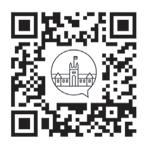
Do you need help with Centrelink?
The SRC has qualified caseworkers who can assist Sydney Uni undergraduates with Centrelink questions and issues, including: your income, parents’ income, qualifying as independent, relationships, over-payments and more.
See the Centelink information our website: srcusyd.net.au/src-help

SRC Caseworkers 21
contact a caseworker bit.ly/SRCcaseworker srcusyd.net.au 02
9660 5222
Omega Crossword

Across 1. Not beaten (11)
7. Whirlpool (9)
12. ? Eucharist camp redistributed drugs (13)
13. Country properties (7)
14. Popular ursine toy (5,4)
15. Sailing boat (5)
16. ? Mountain ridge featured in a retelling (5)
17. Additions to breasts, say (8)
19. Come apart, often metaphorically (4,2,6)
21. Windier (7)

23. Theme of today’s picture clues (6)
25. ? Amorality pervert? I am one (6)
27. Passages of legislation (10)
28. Lack of wisdom or care for the future (10)
31. In any case (4,2)
33. Small church (6)
34. Relating to a husband or wife (7)
37. Combining letters and numbers (12)
39. Type of 23 Across associated with Picture A (8)
42. Lesson (5)
43. Type of 23 Across of which The Lobster is one (5)
44. Type of 23 Across associated with Picture B (9)
46. List individually, e.g. on a receipt (7)
47. ? Tie store chain mishandled by thinkers without practical experience (13)
48. 7 Down actor and dancer (4,5)
Down
1. Without being sorry or showing mercy (9)
2. Type of 23 Across associated with Picture C (7)
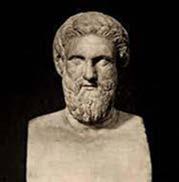
3. Card game (5)
4. Type of 23 Across associated with Picture D (12)
5. Four-sided shape (6)
6. Places where cows are milked (5,5)
7. Type of 23 Across associated with Picture E (7)
8. ? Fat building (8)
Quiz
9. Type of 23 Across of which Arrested Development is one (9)
10. Acts of making employees redundant (13)
11. The arrangement of elements in a camera frame (4,2,5)
18. Top celebs (1-4)
20. Kind of whisky (6)
22. Type of 23 Across, of which Twelfth Night is one (13)
24. Facial dent caused by smiling (6)

26. Of the upper 42 Across (12)
27. Attractive, noticeable (3-8)

29. Duvet (5)
30. Devices used for watering lawns (10)
32 Type of 23 Across associated with Picture F (9)
35. Restricts to a particular area, e.g. of the body (9)
36. Weight to be lifted (8)
38. On the dot (7)
40. Sweet bun consumed with a hot drink (7)
41. Sea hawk (6)
45. Modern-day witchcraft (5)
Picture E
Crossword by Tournesol. Quiz by Some Hack.
1. What letter which was previously used as a fancier way of writing another letter, became the final letter added to the English alphabet in the 16th century?
2. What Steven Spielberg film is a loose adaptation of a JM Barrie Novel?


3. What is the most traded spice in the world accounting for over a fifth of the global spice trade?
4. The band who had the hit Pinball Wizard are “The ….”?
5. The 6 most common types of Quarks are Up, down, top, bottom, charm and what?
6. What connects the previous answers?
49. Tall buildings (11) Find
Puzzles 22
the answers at honisoit.com/puzzle-answers
Picture A Picture B
Picture C
Picture D
Picture F
Address: http://misinformation.com.au

National Sport Lifestyle Fascist Propaganda
Lesbian spends ten hours researching Matildas’ girlfriends


MAKKA SENT PAKKING: Makka Pakka arrested in drug bust, Igglepiggle in intensive care

The entire Night Garden is in uproar following the arrest of Makka Pakka by Night Garden Police (NGPD) last night.

Pakka is known for collecting and washing stones around the Night Garden, and is rarely seen without his Og-Pog scooter; his uff-uff dryer, and his special trumpet. But the only thing Pakka was packing when the NGPD stormed his cave last night was 37 kilos of cocaine.
“This was a massive bust… one of the largest cocaine stashes we’ve ever seen, from the standpoint of drugs,” NGPD Chief Tombliboo said.
Pakka was not at his cave during the raid — he was at an all-night rock-washing rager with Igglepiggle and the Pontipines. When NGPD arrived at the scene, Pakka held Igglepiggle hostage at uff-uffpoint, threatening to “teach the pickle a lesson” unless the police let him walk free. NGPD complied, but not before Makka Pakka could kneecap Igglepiggle. Igglepiggle is now in the intensive care unit at Night Garden Memorial Hospital, reportedly in a stable condition.
Pakka then attempted to evade capture by leading the police on a low-speed chase through the Night Garden on his Og-Pog, as they followed in the Pinky Ponk blimp. This continued for two hours, until one of the Wottingers drove the Ninky Nonk into him.
“I had absolutely no idea,” a crying Upsy Daisy told our reporter, inflating her skirt.


“Makka, if you’re hearing this… you’re dead to me… stay the fuck away from me and Igglepiggle” she said.


Makka Pakka is currently in custody and awaiting trial. NGPD are currently investigating how Pakka acquired the cocaine, and whether the massive inflatable Haahoos had anything to do with it.
Crack cocaine or Ritalin: what’s keeping Eddie Woo so happy?

Man brutally decapitated in USU’s Battle of the Bands

“Oh Scotty, you dog”: VC’s secret sex life revealed
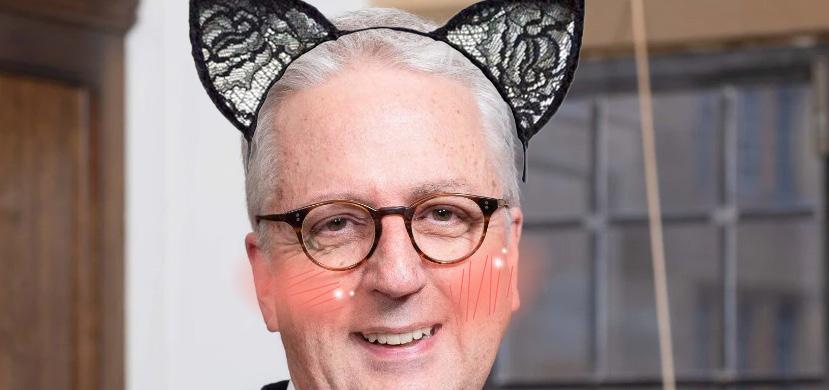
Annamarie Jagose speaks out amid speculation of Pete Davidson relationship Knock Knock. Who’s there? The Con. The Con who? Did you know I go to the Con.


Meet Ham-ish: The piglike chicken that can’t catch a break (“I’m not a fucking pig!”)

misinformation.com.au File Edit View Favourites Help
A a




















 Art by Eamonn Murphy and Luke Mesterovic
Art by Eamonn Murphy and Luke Mesterovic

























































 Luke Mesterovic reports.
Luke Mesterovic reports.
 Art by Katarina Butler
Art by Katarina Butler











































